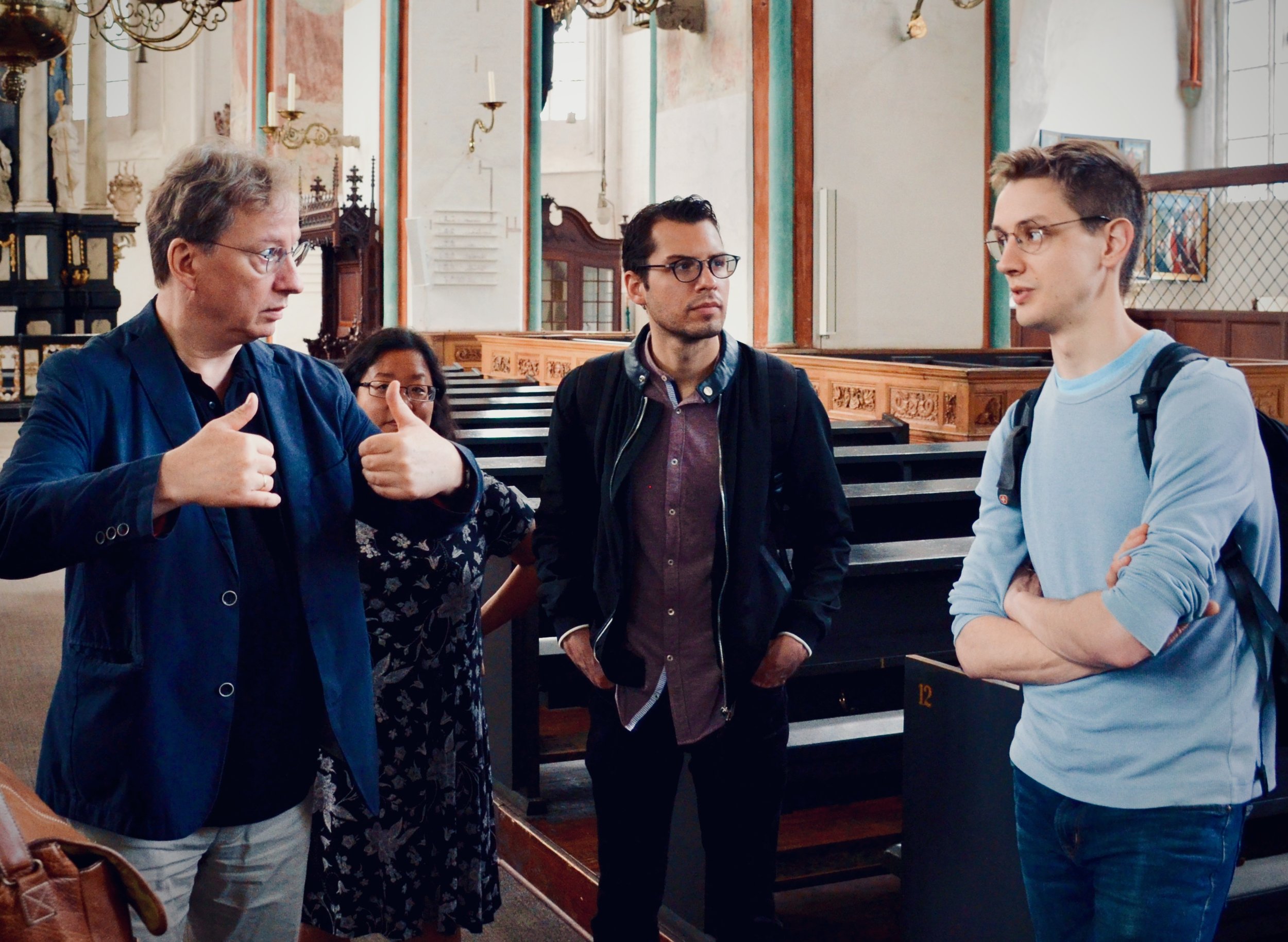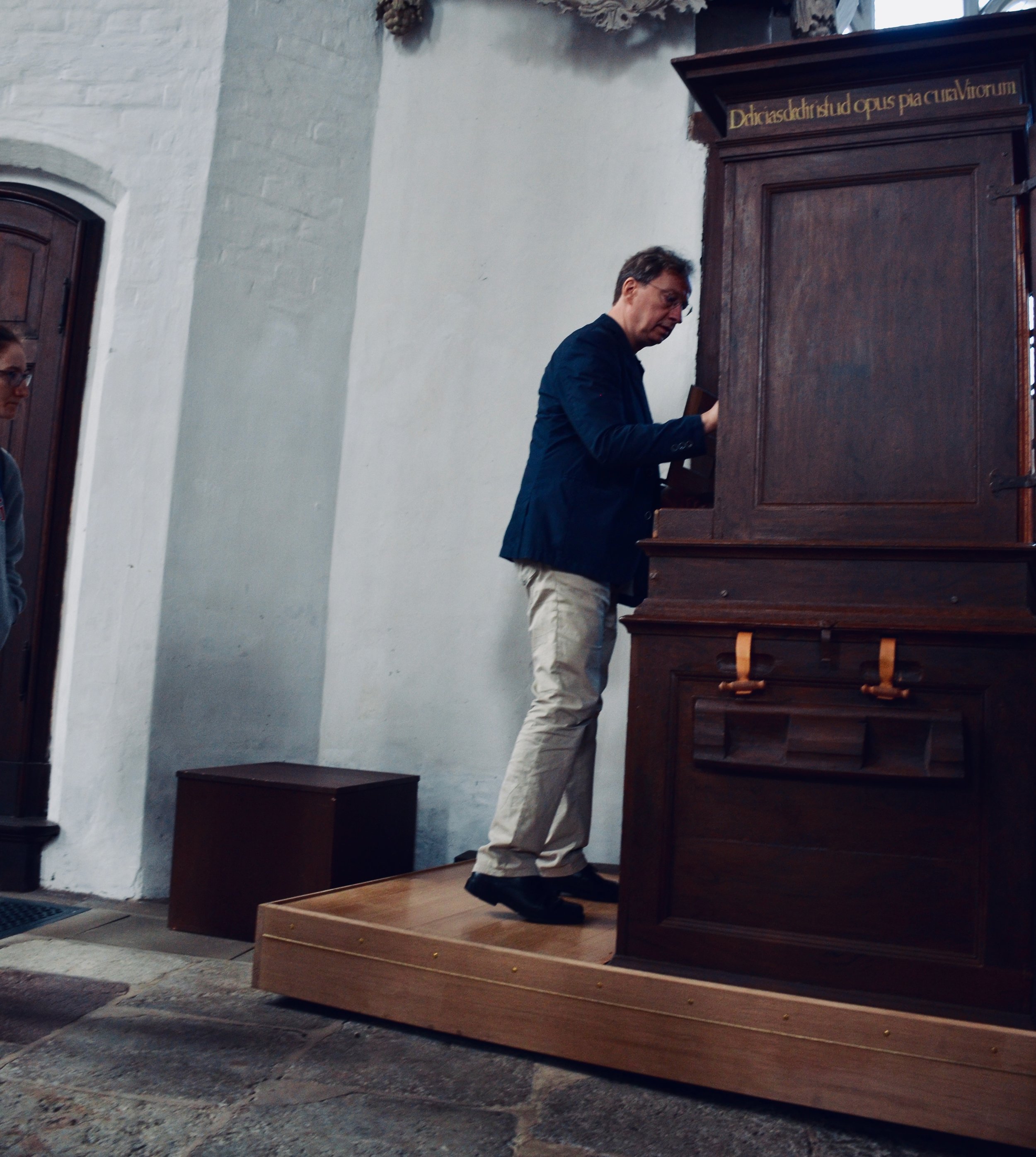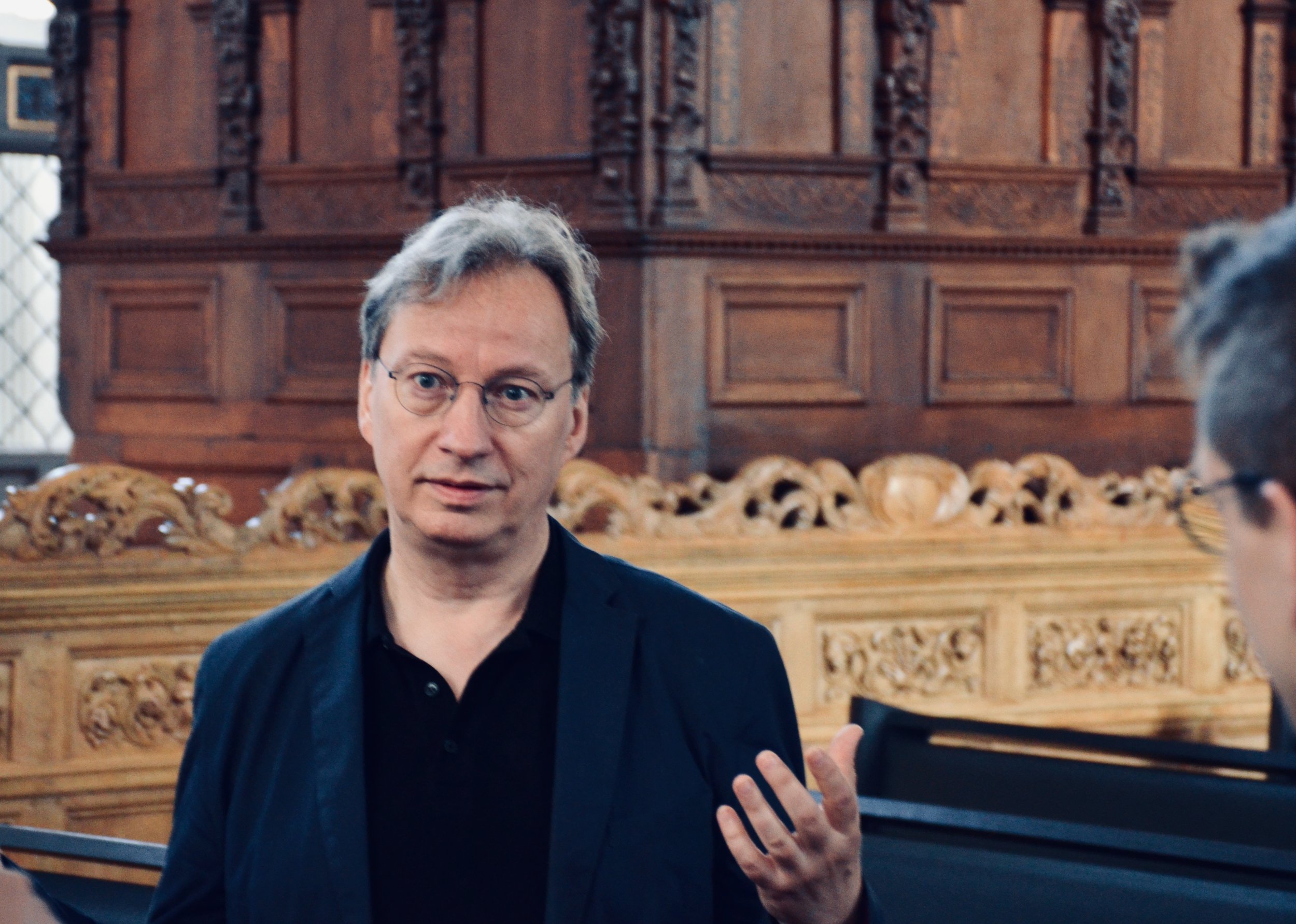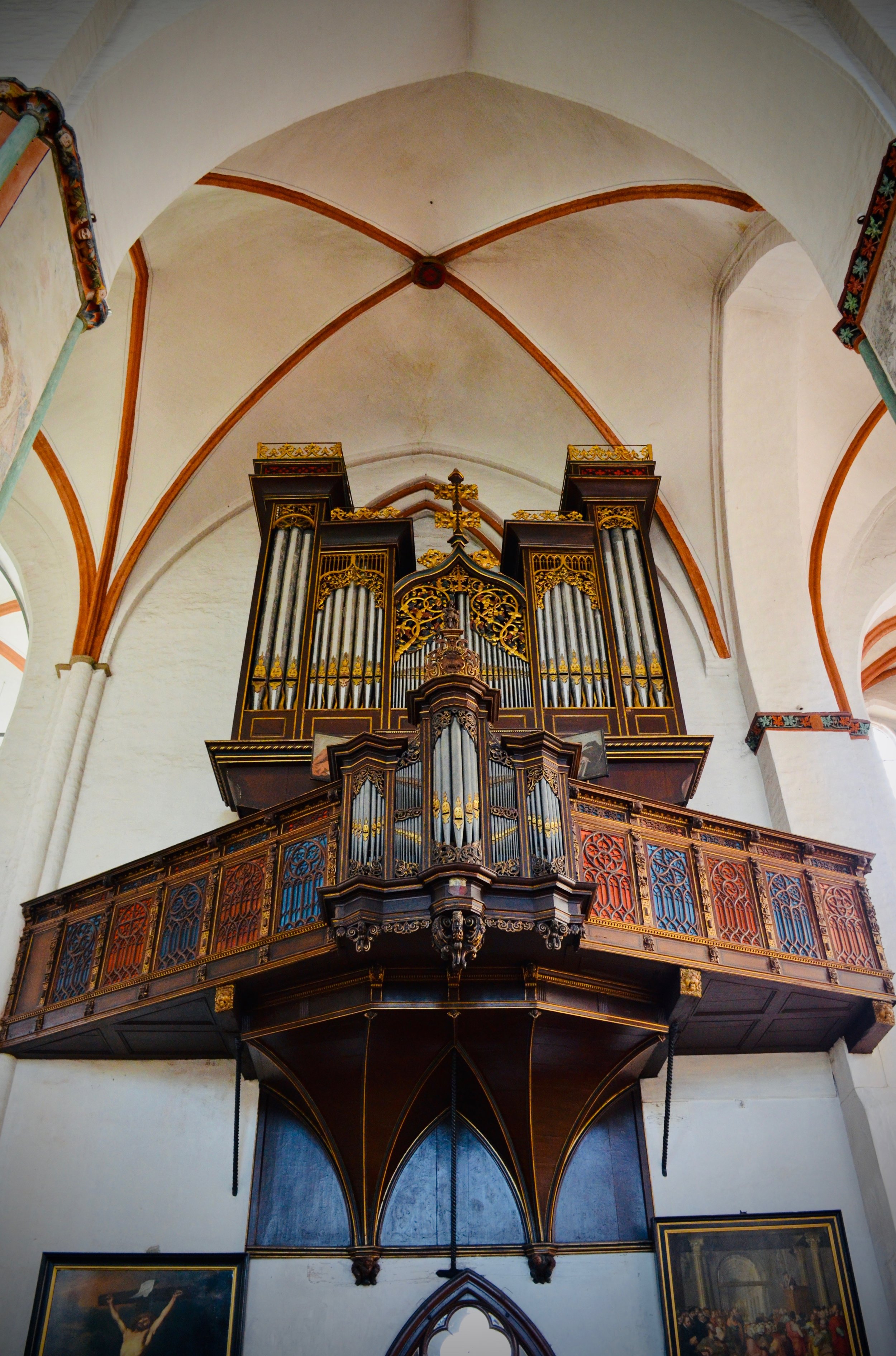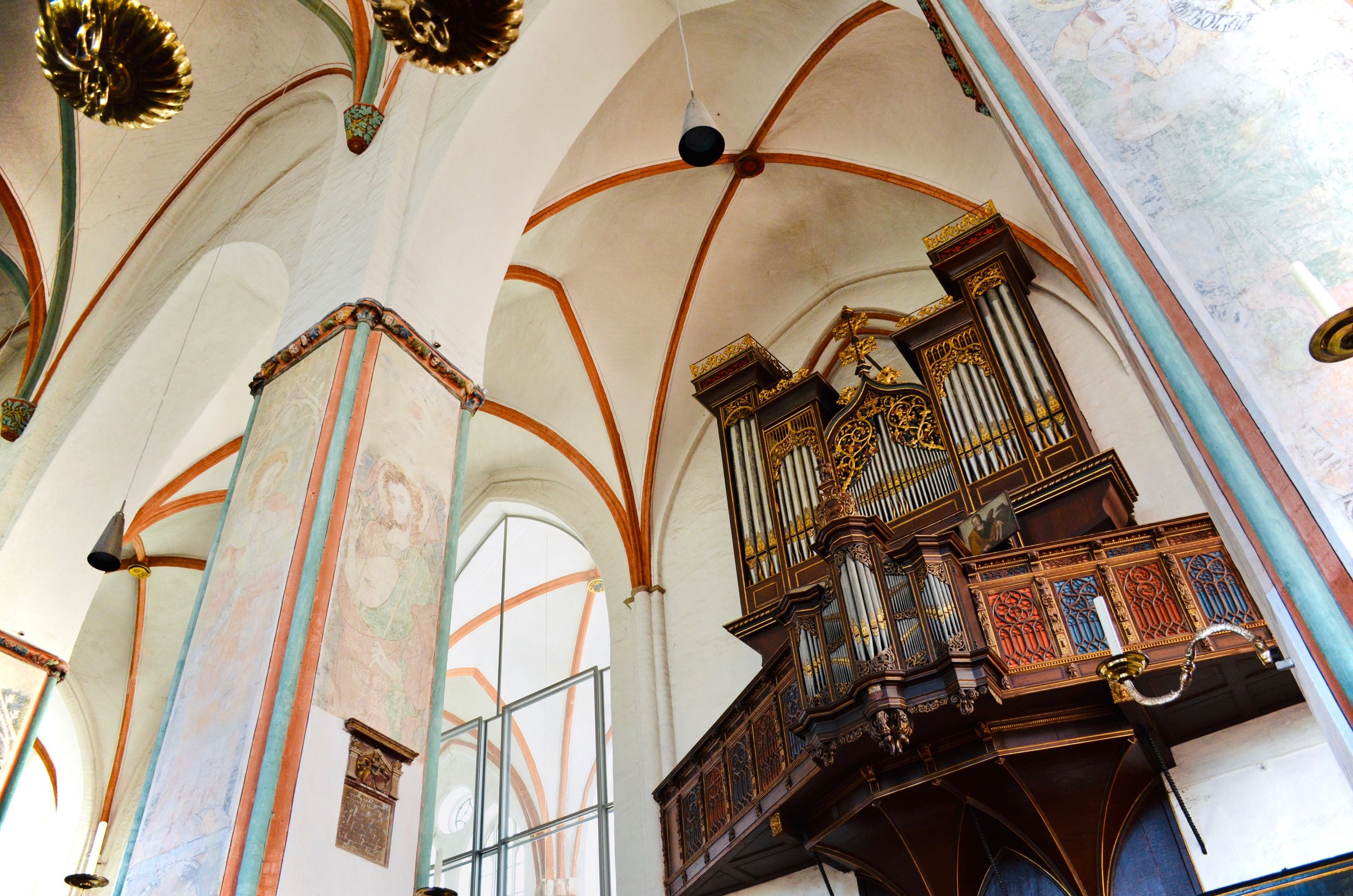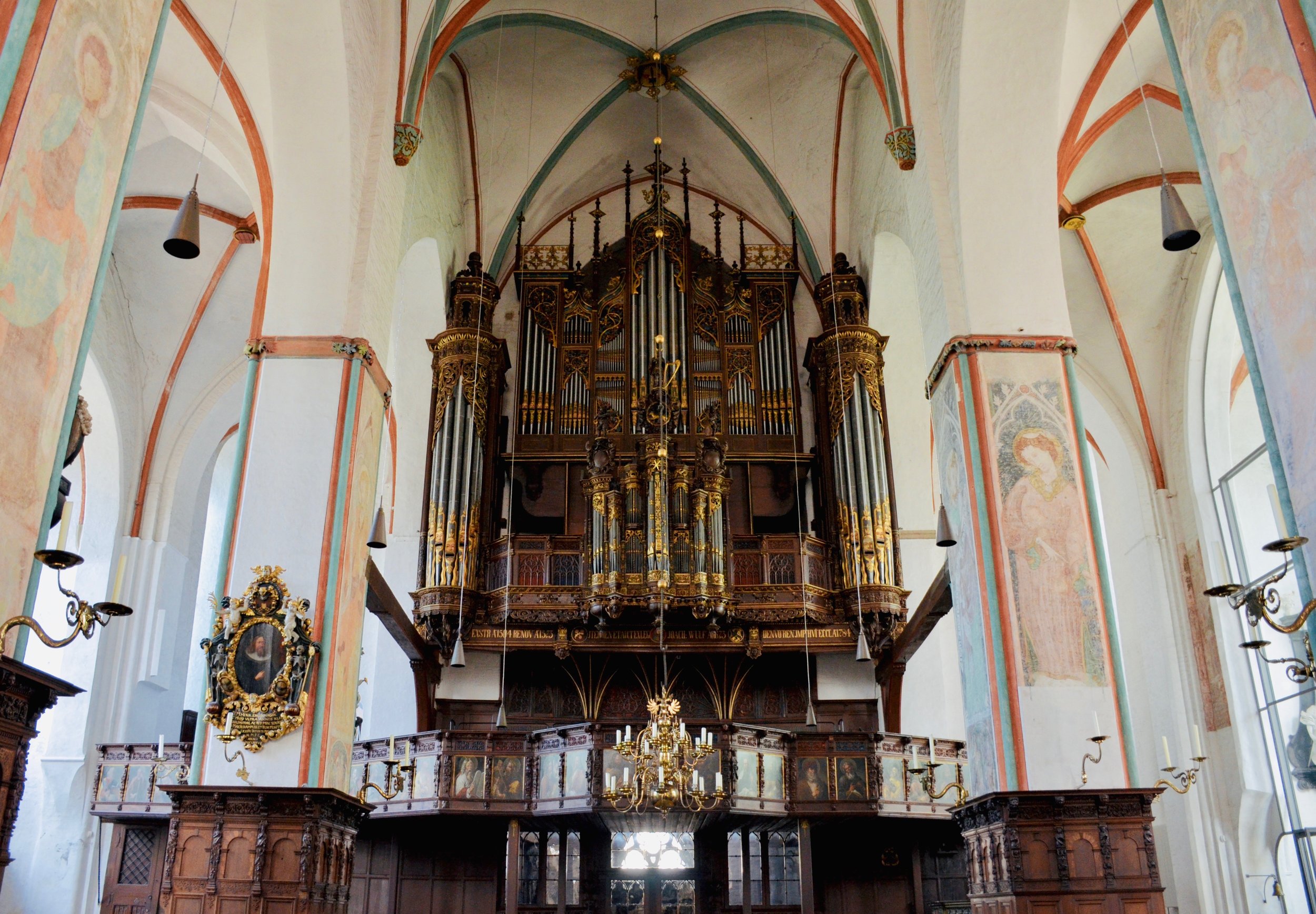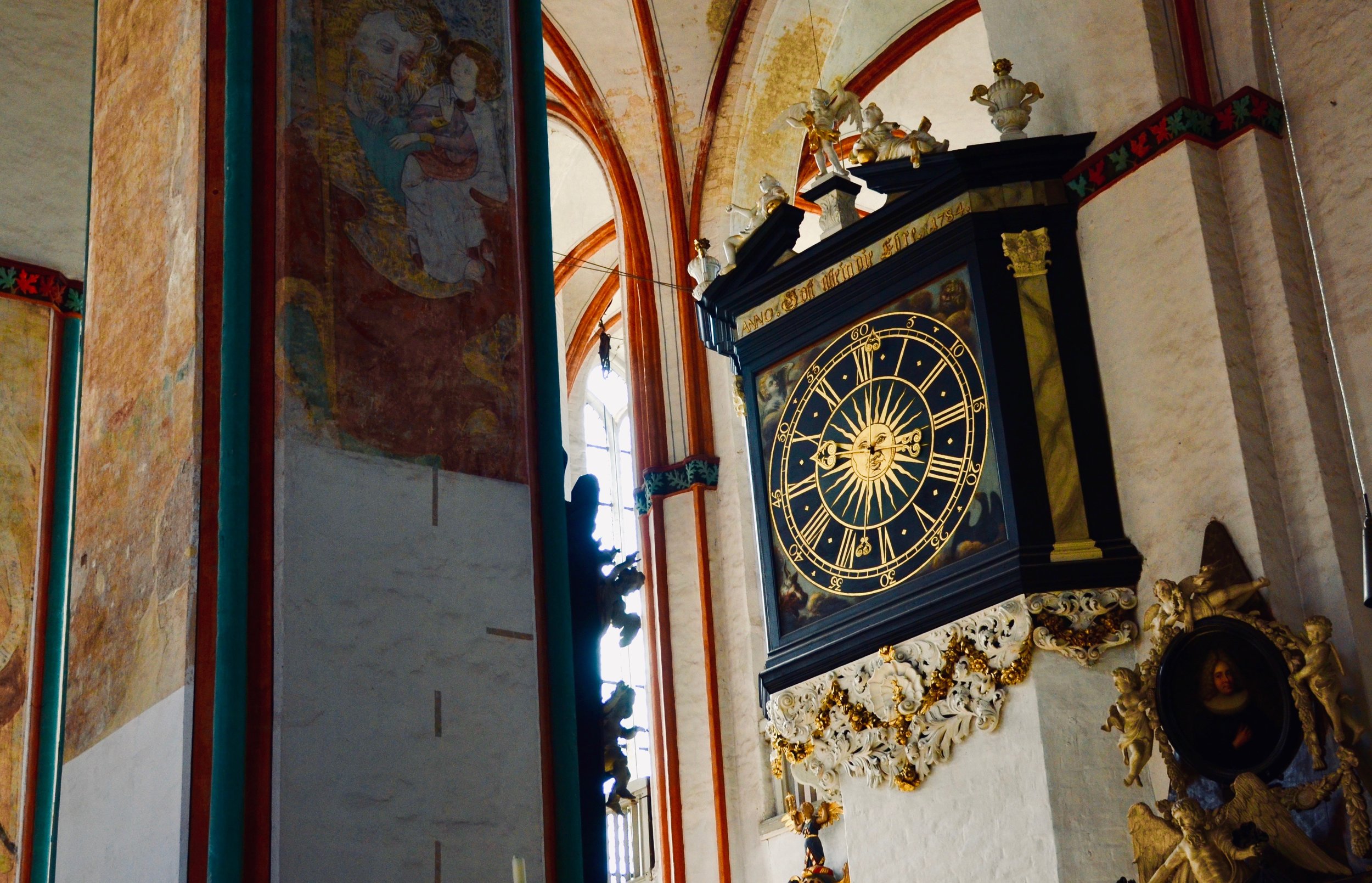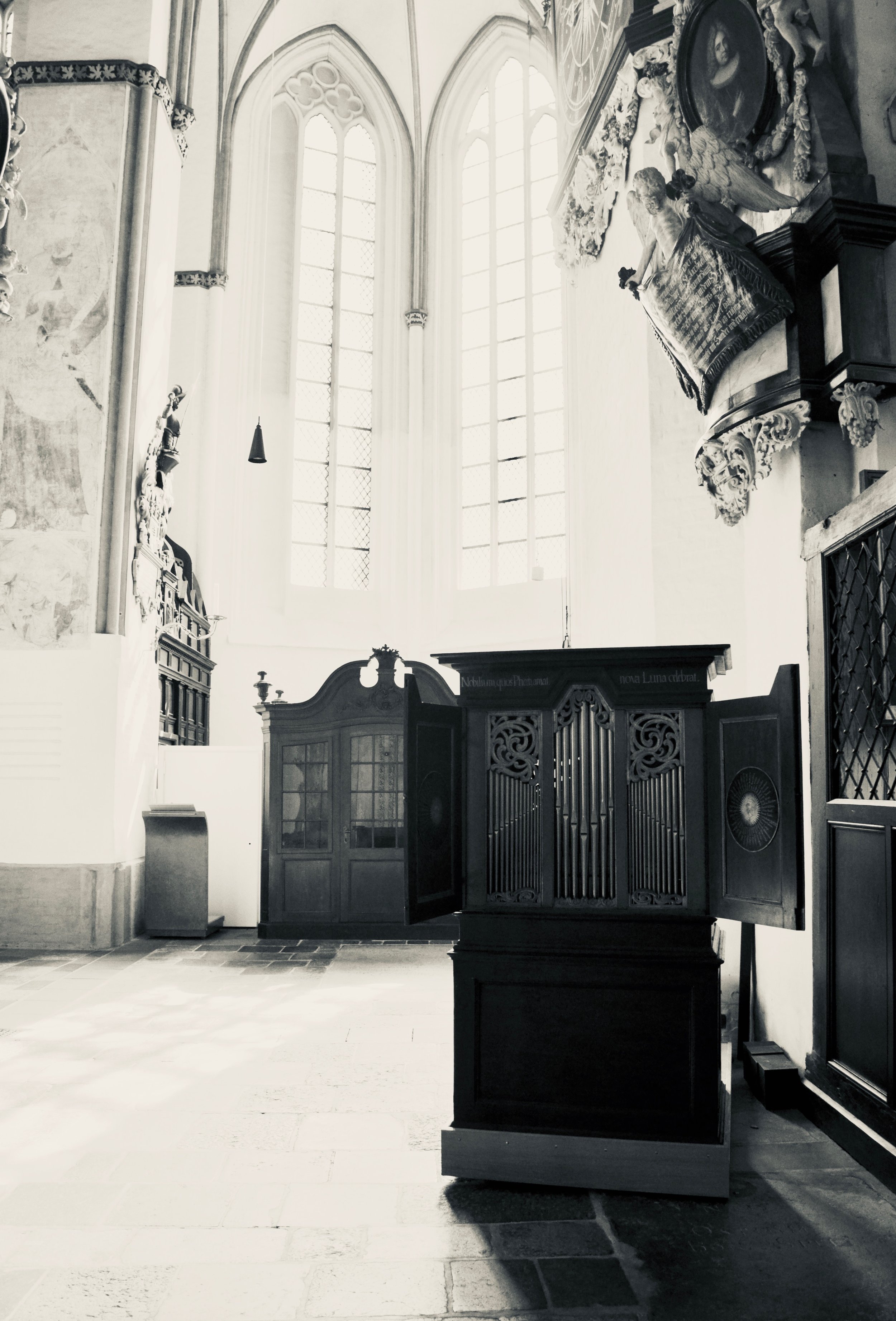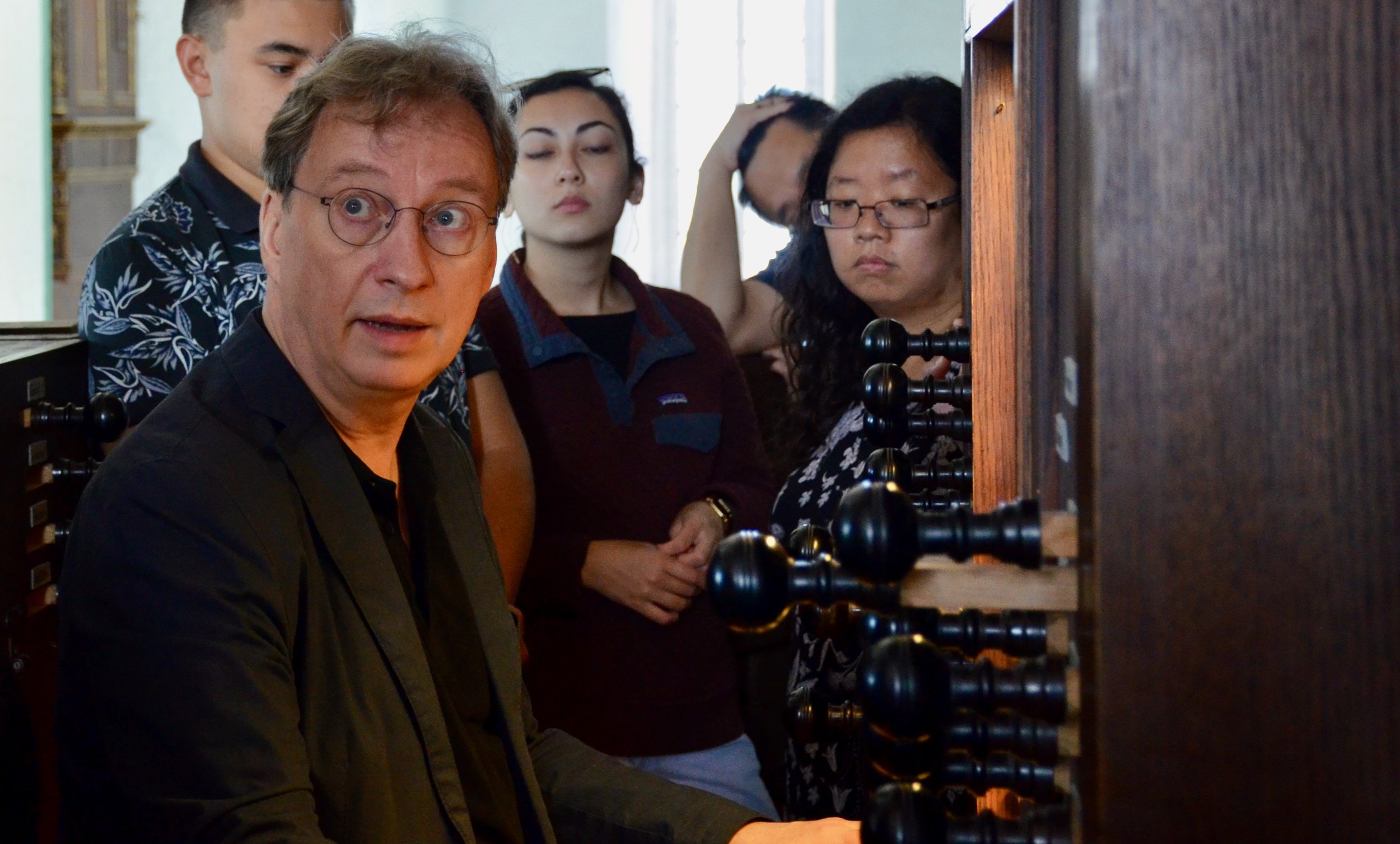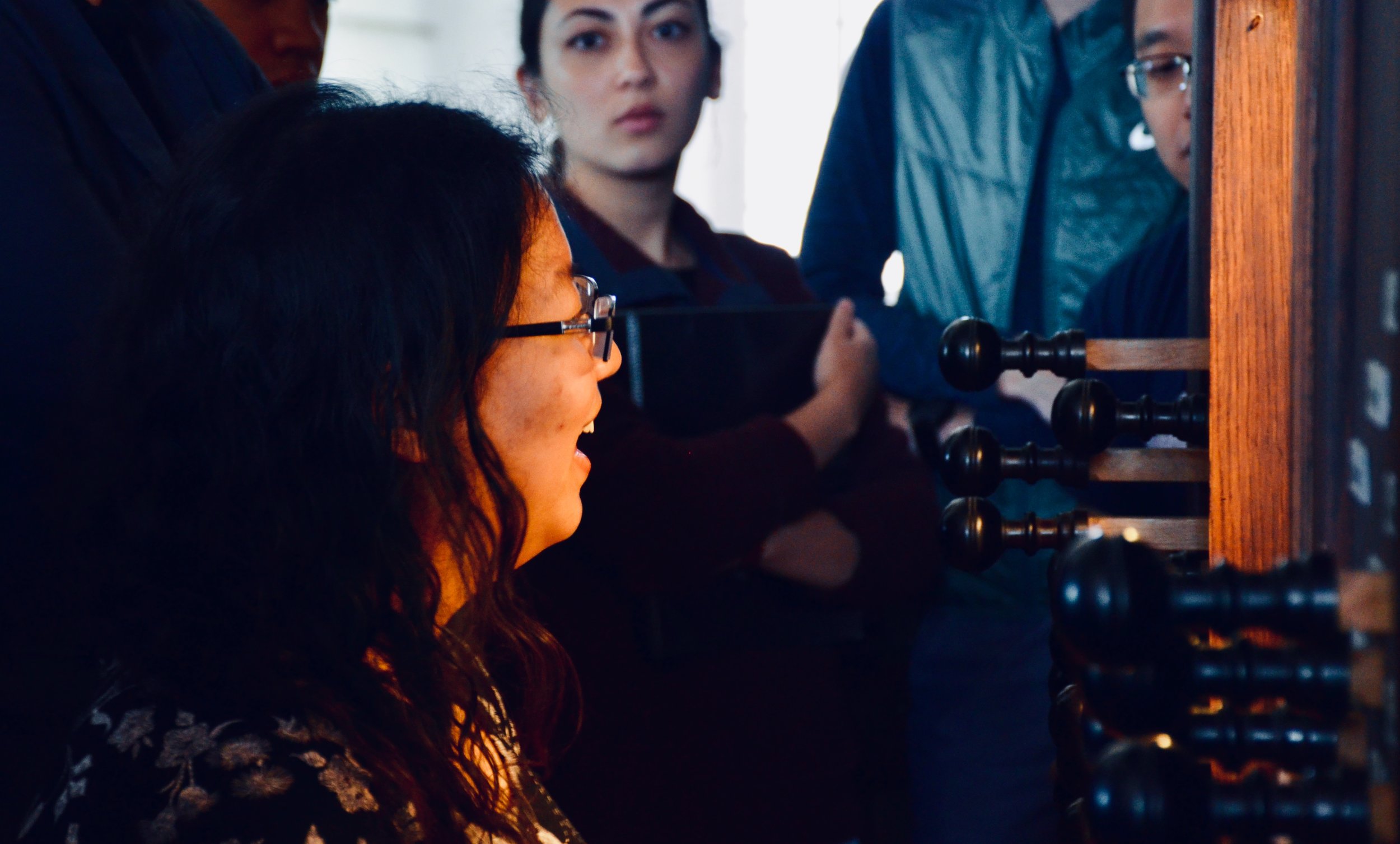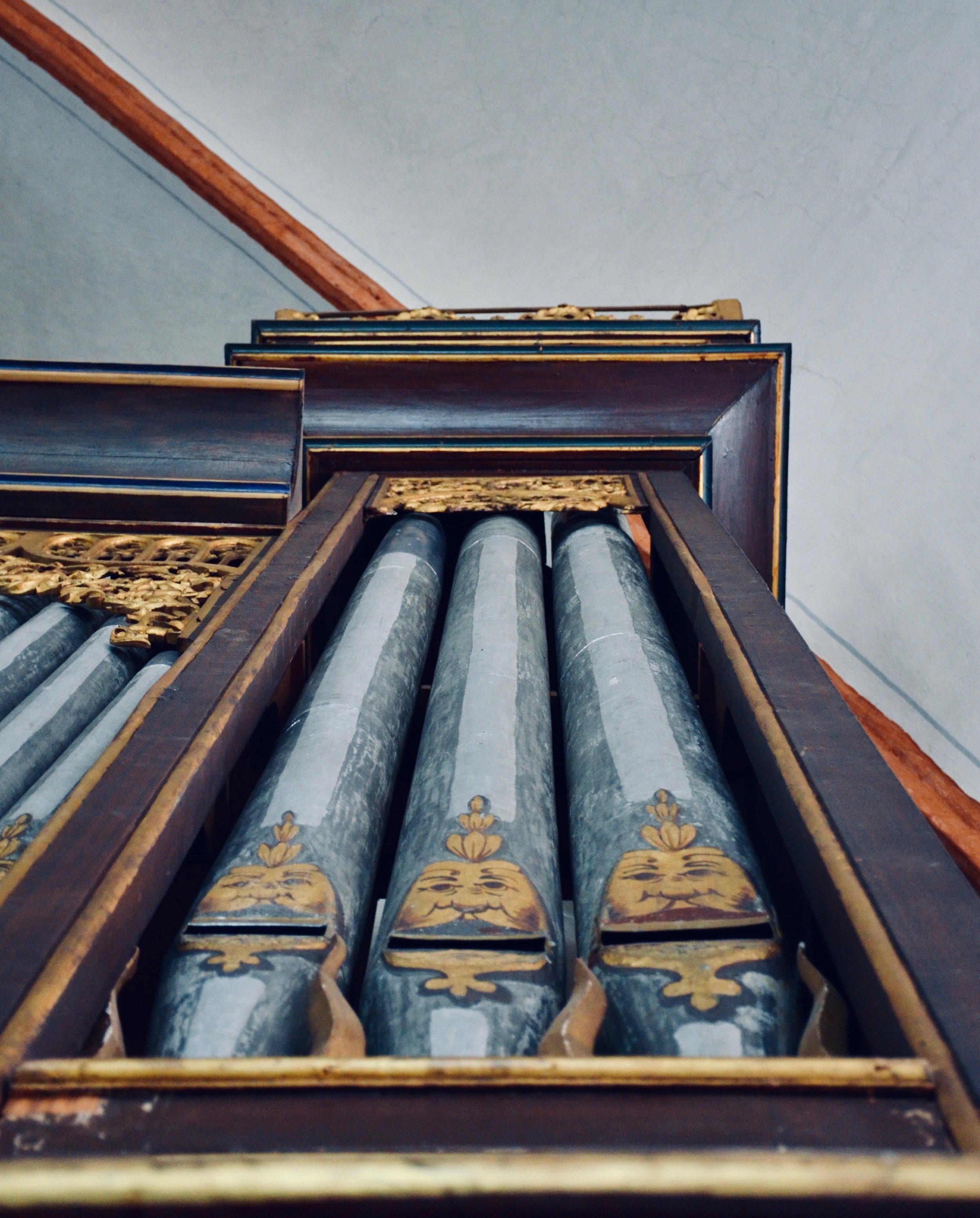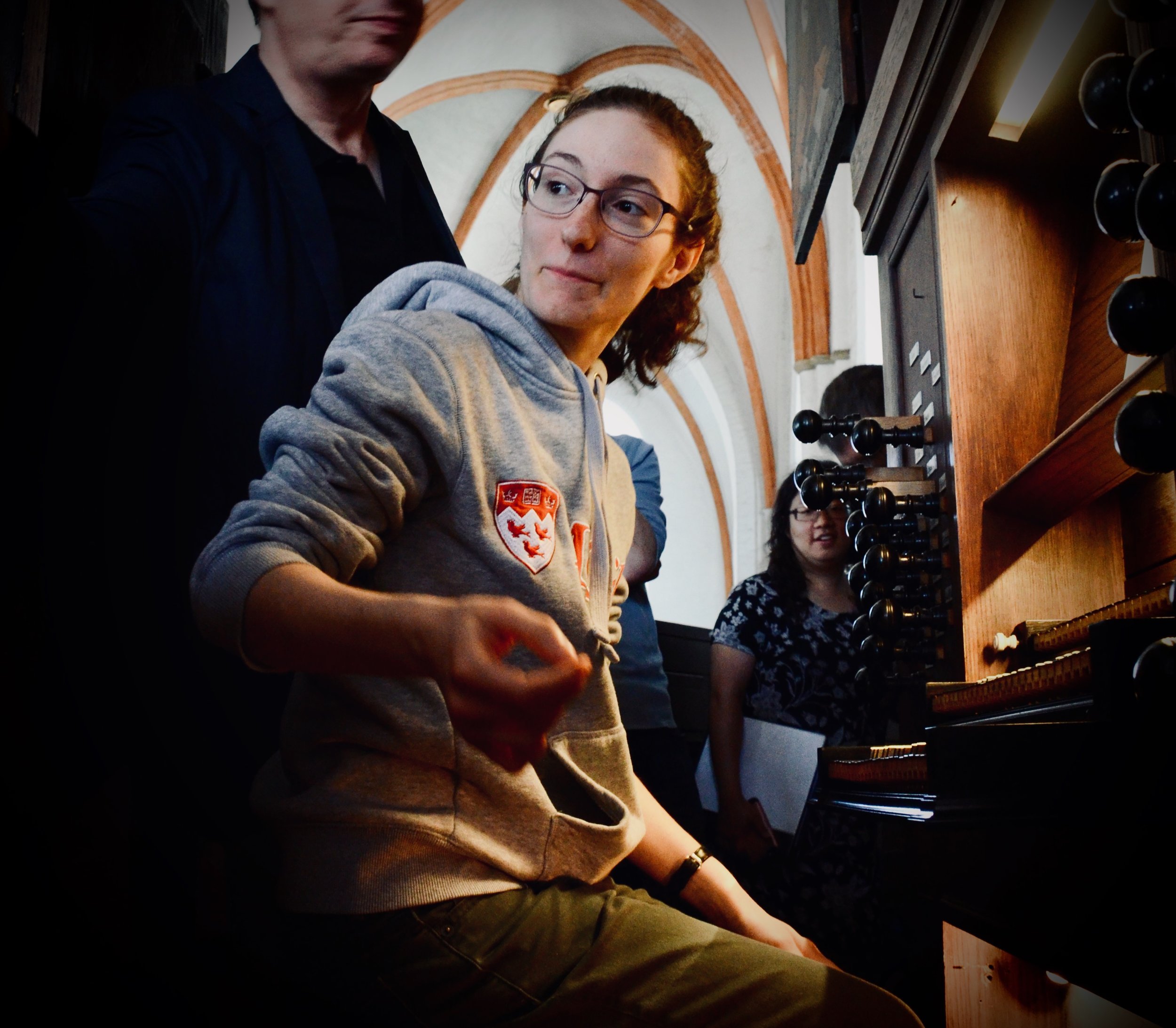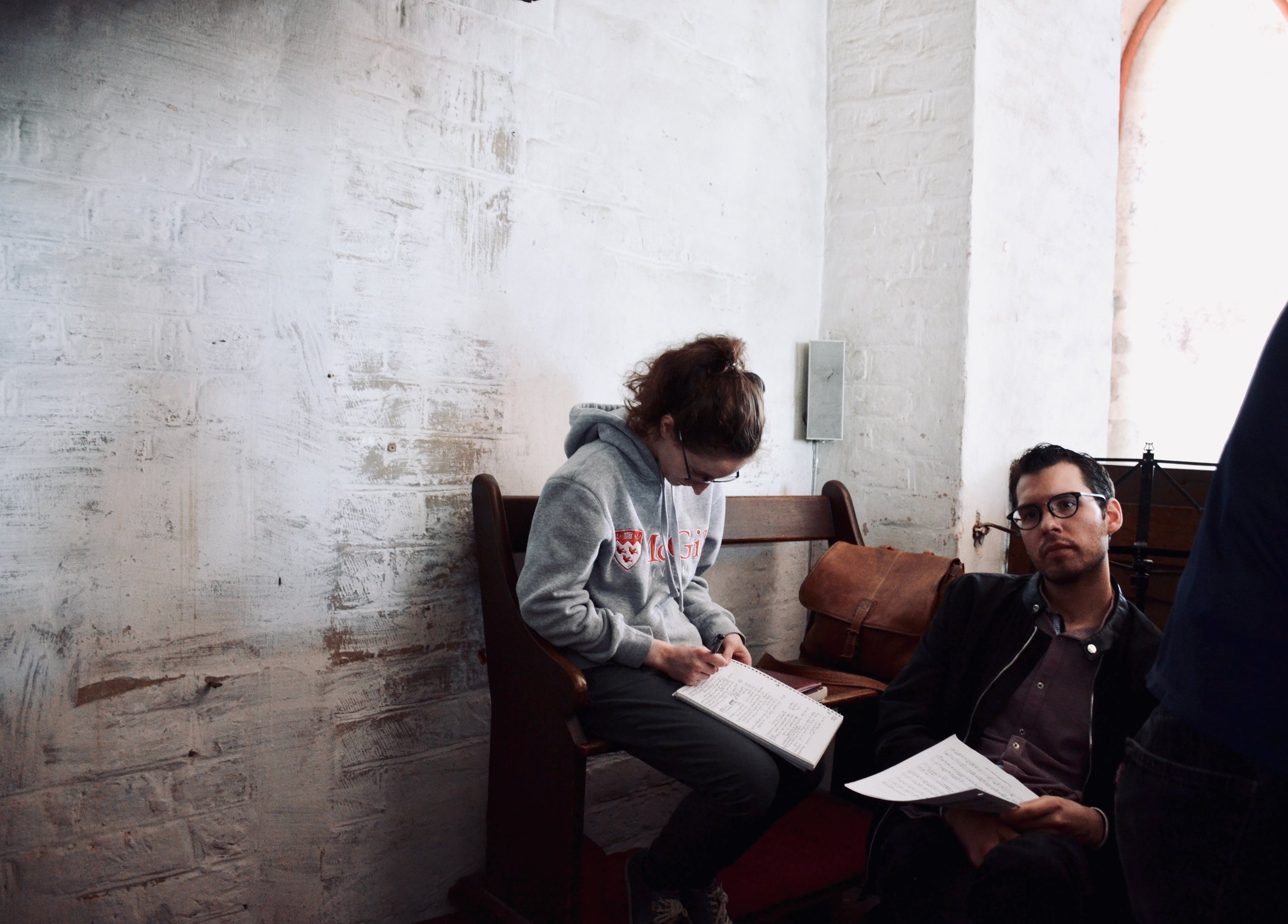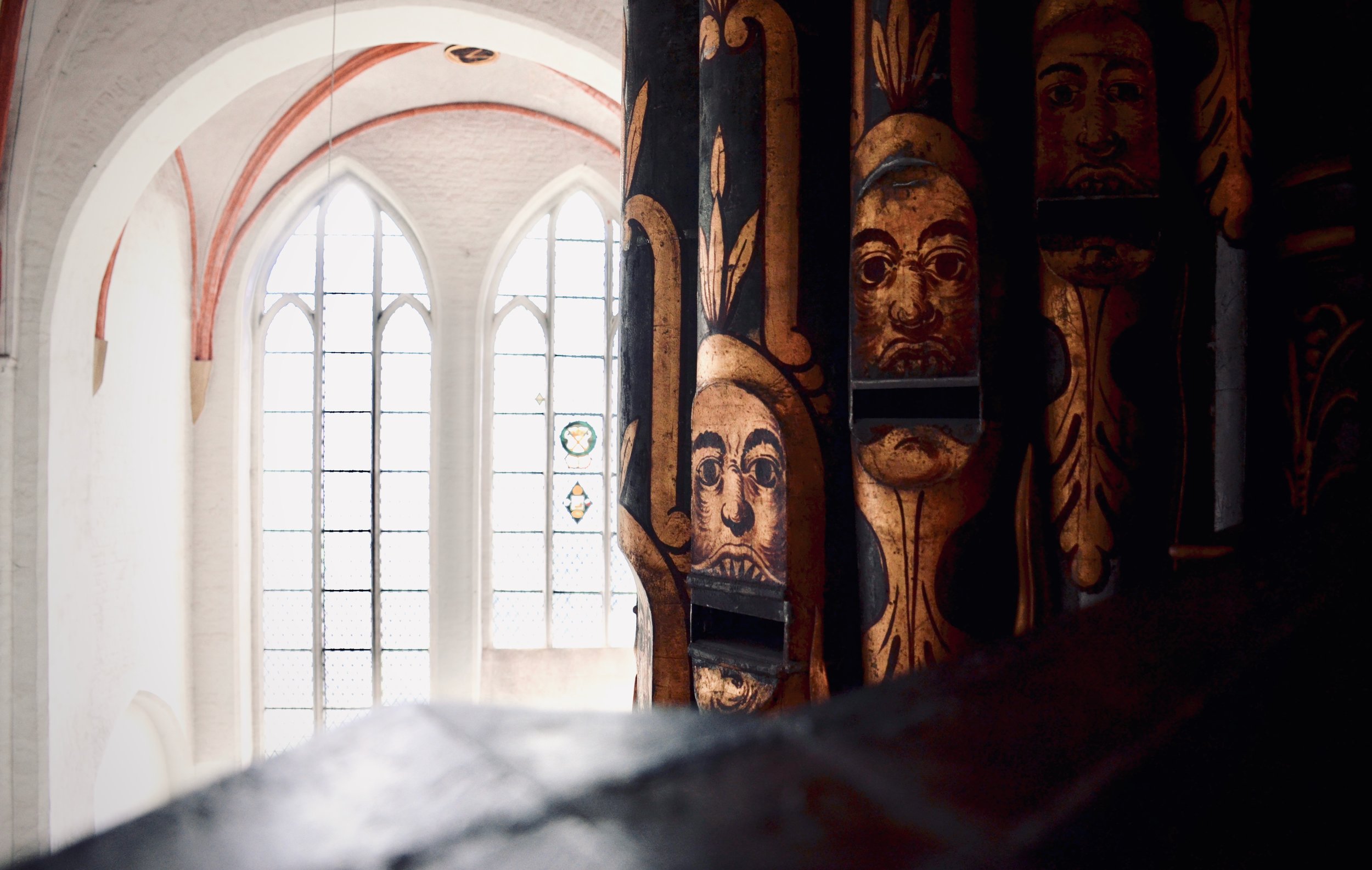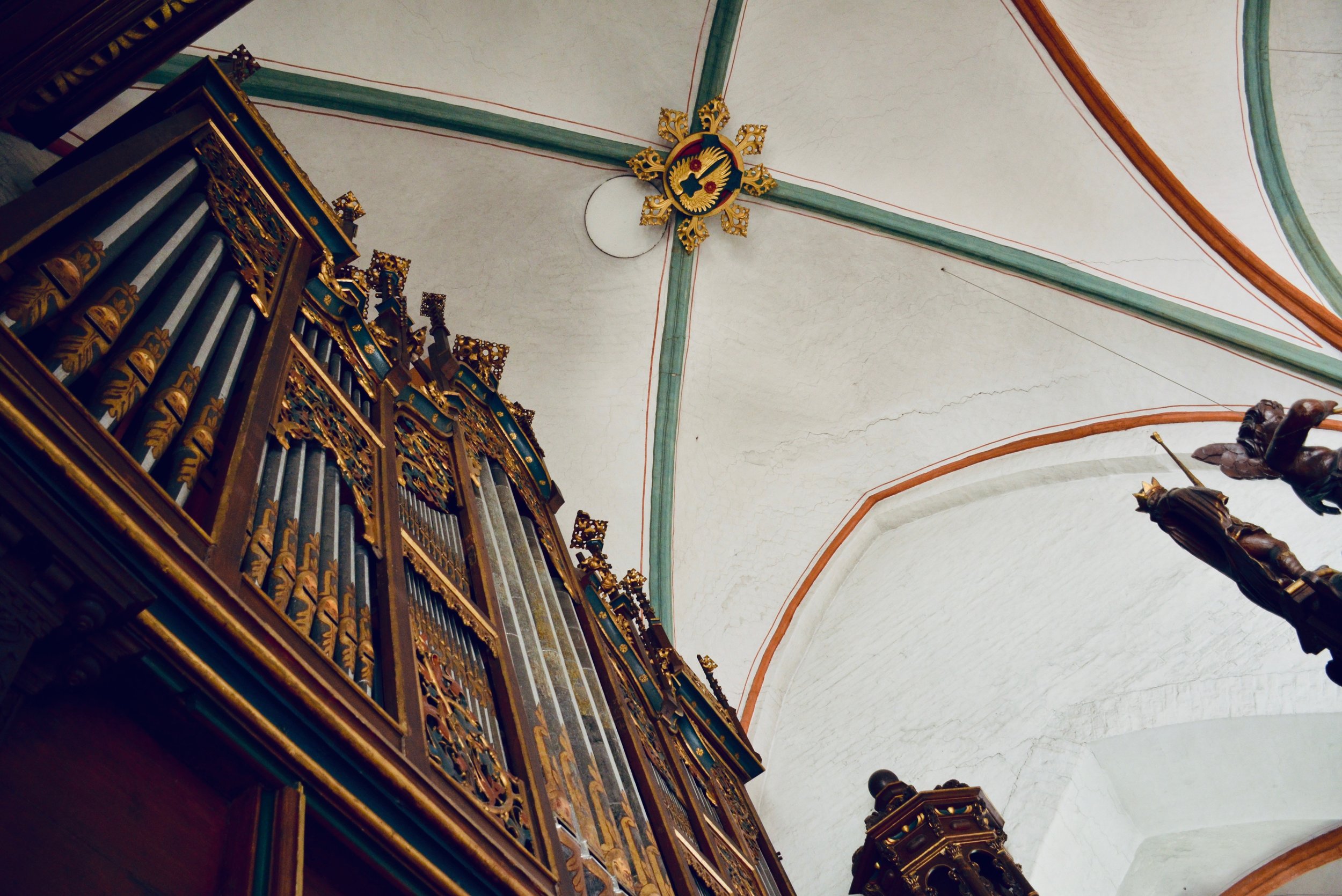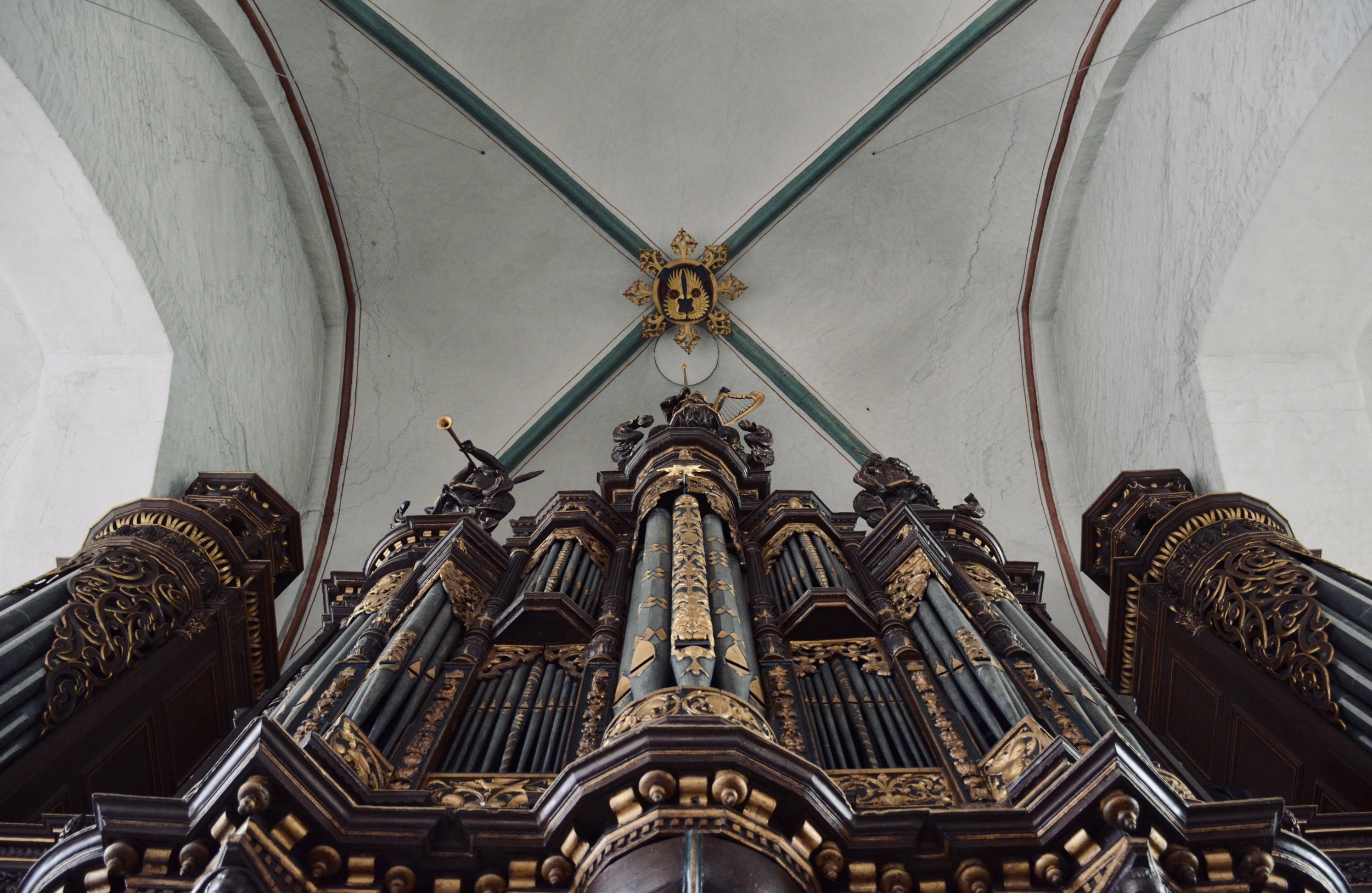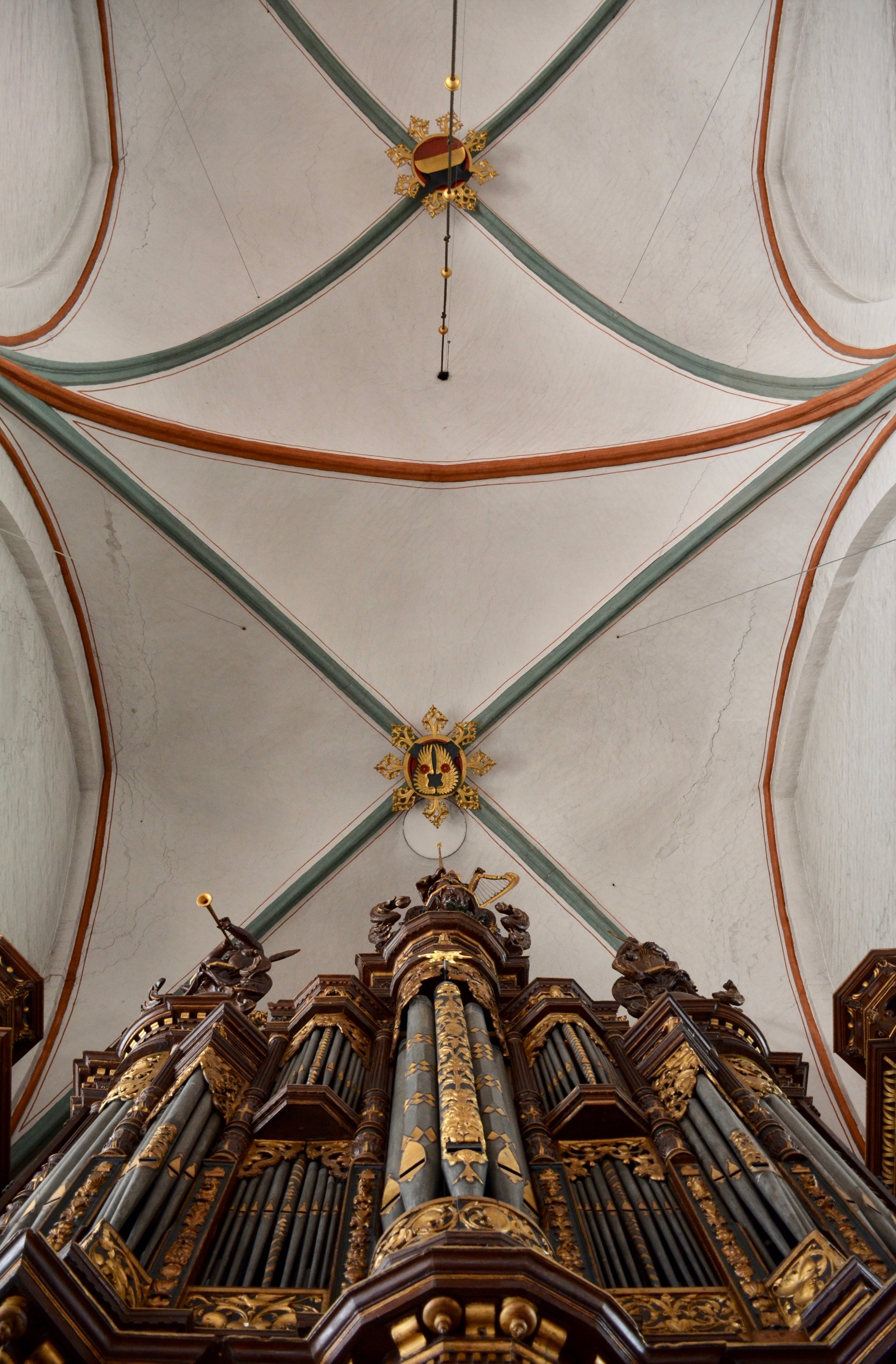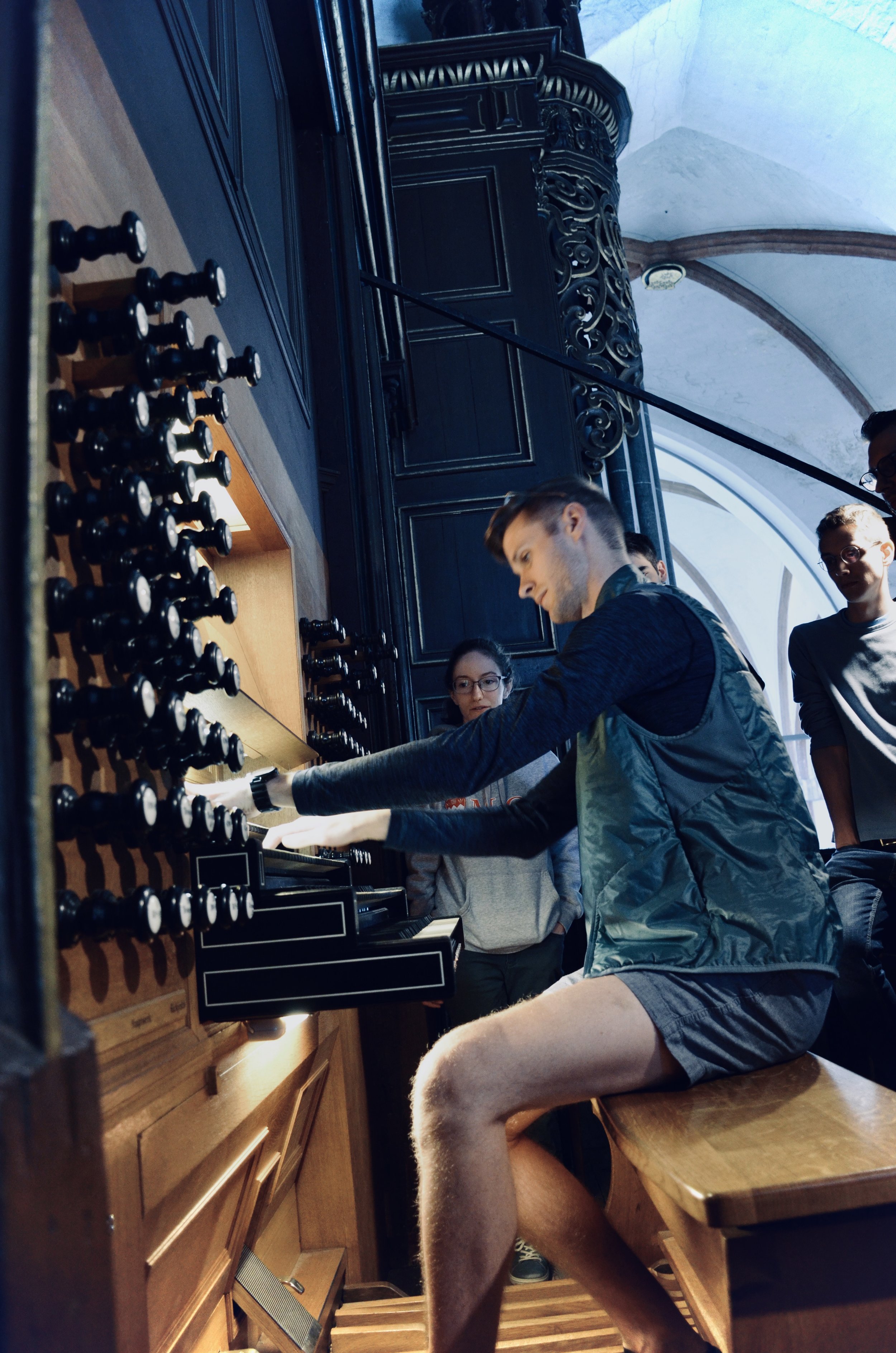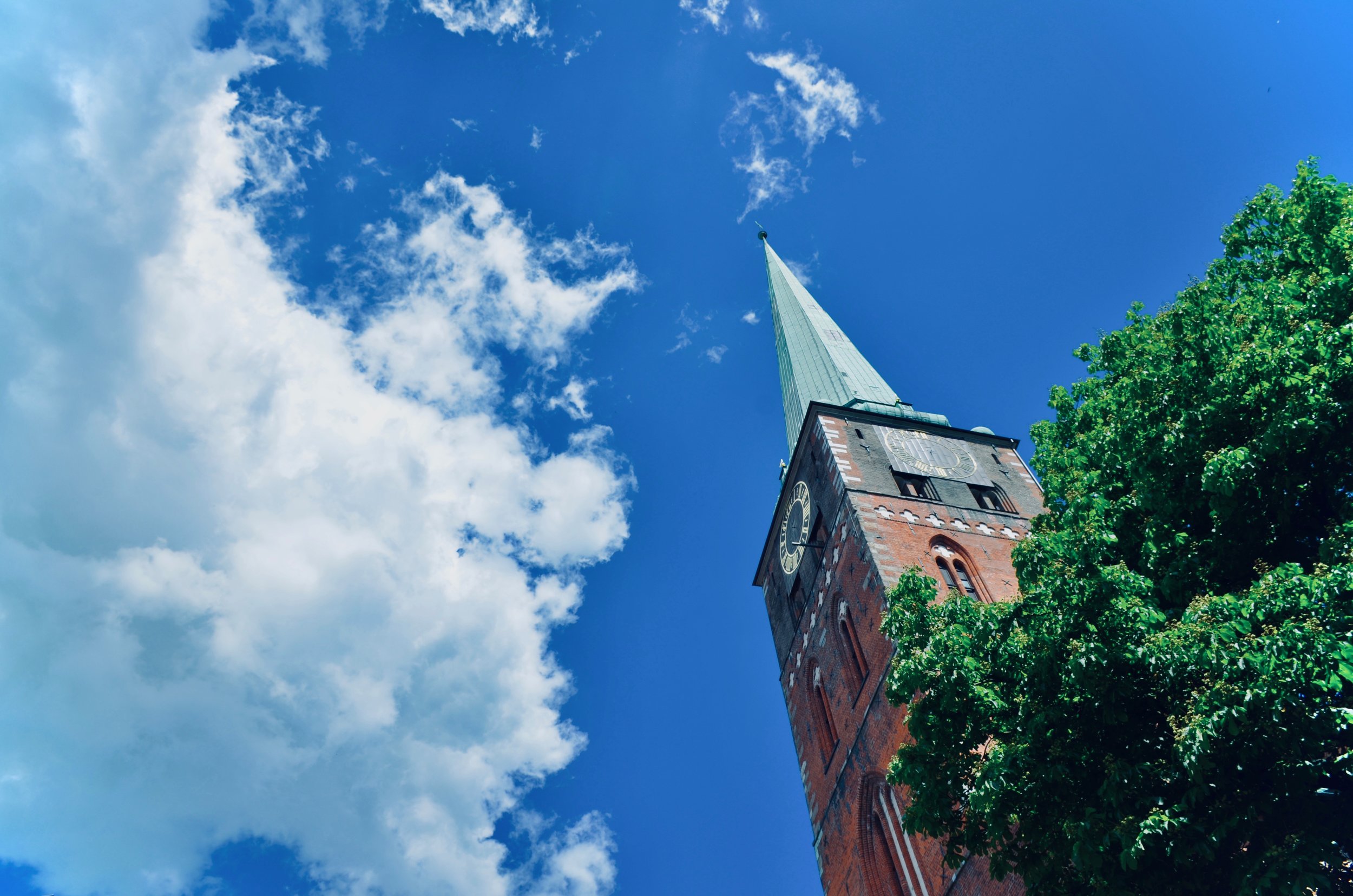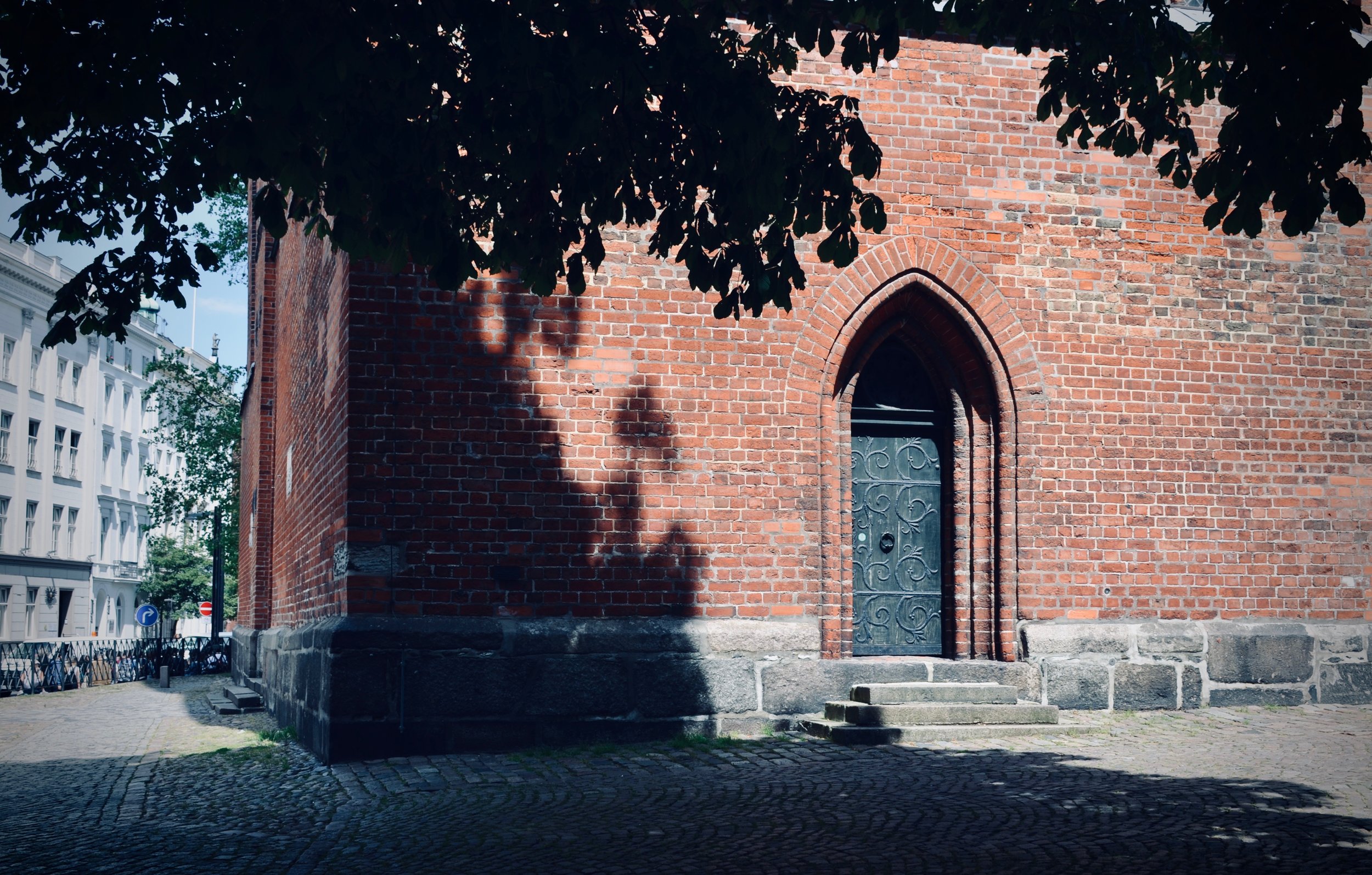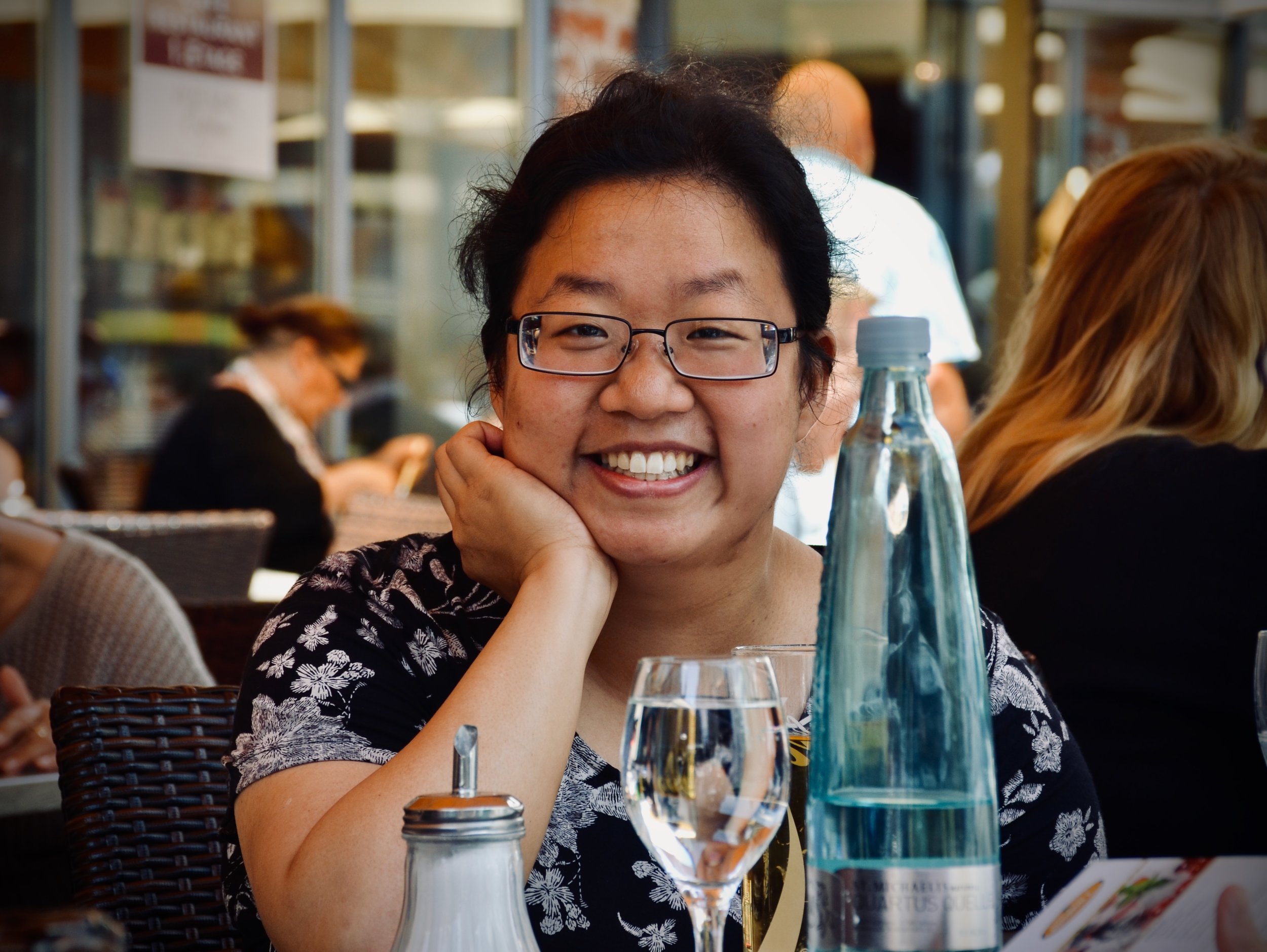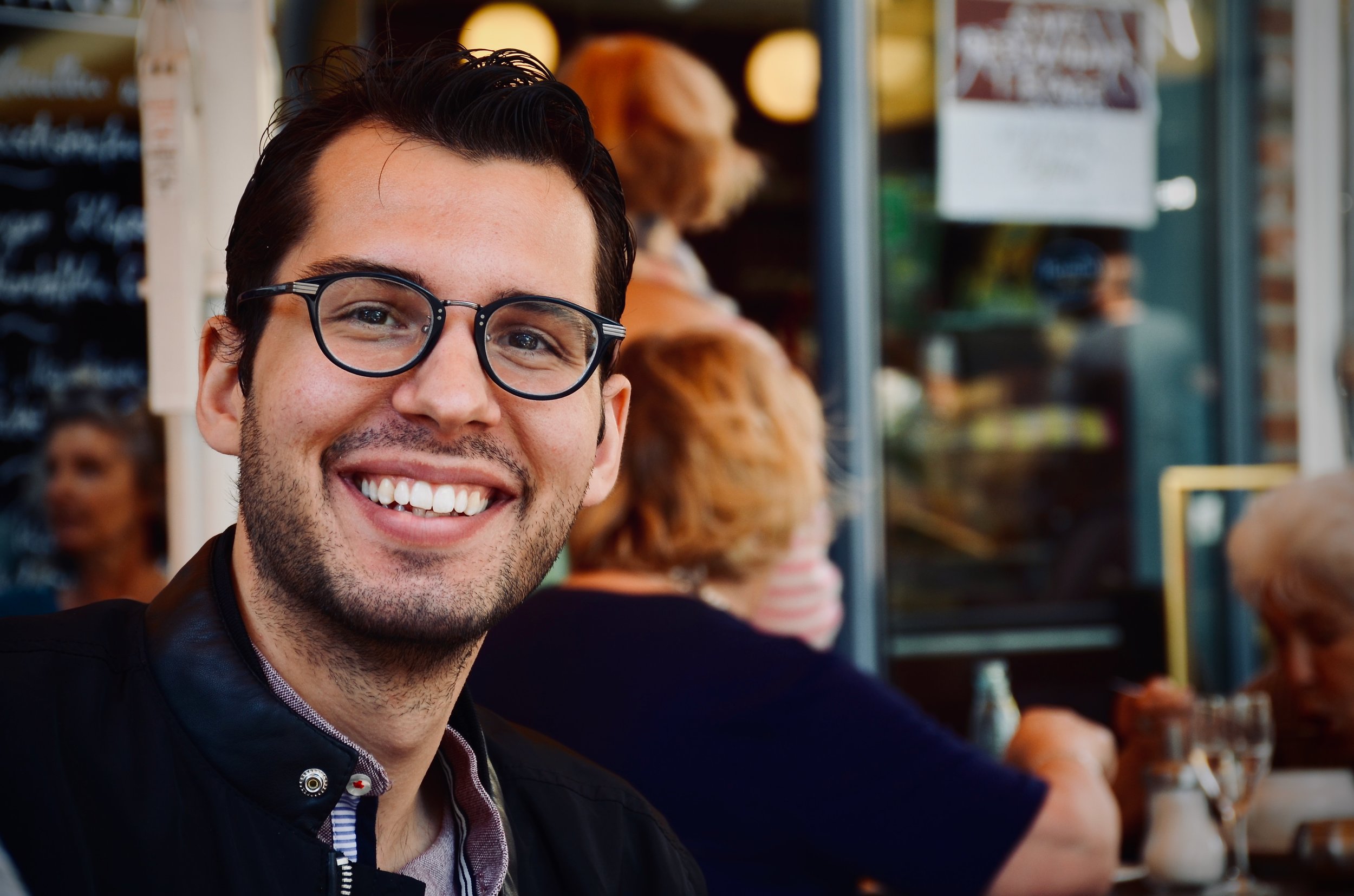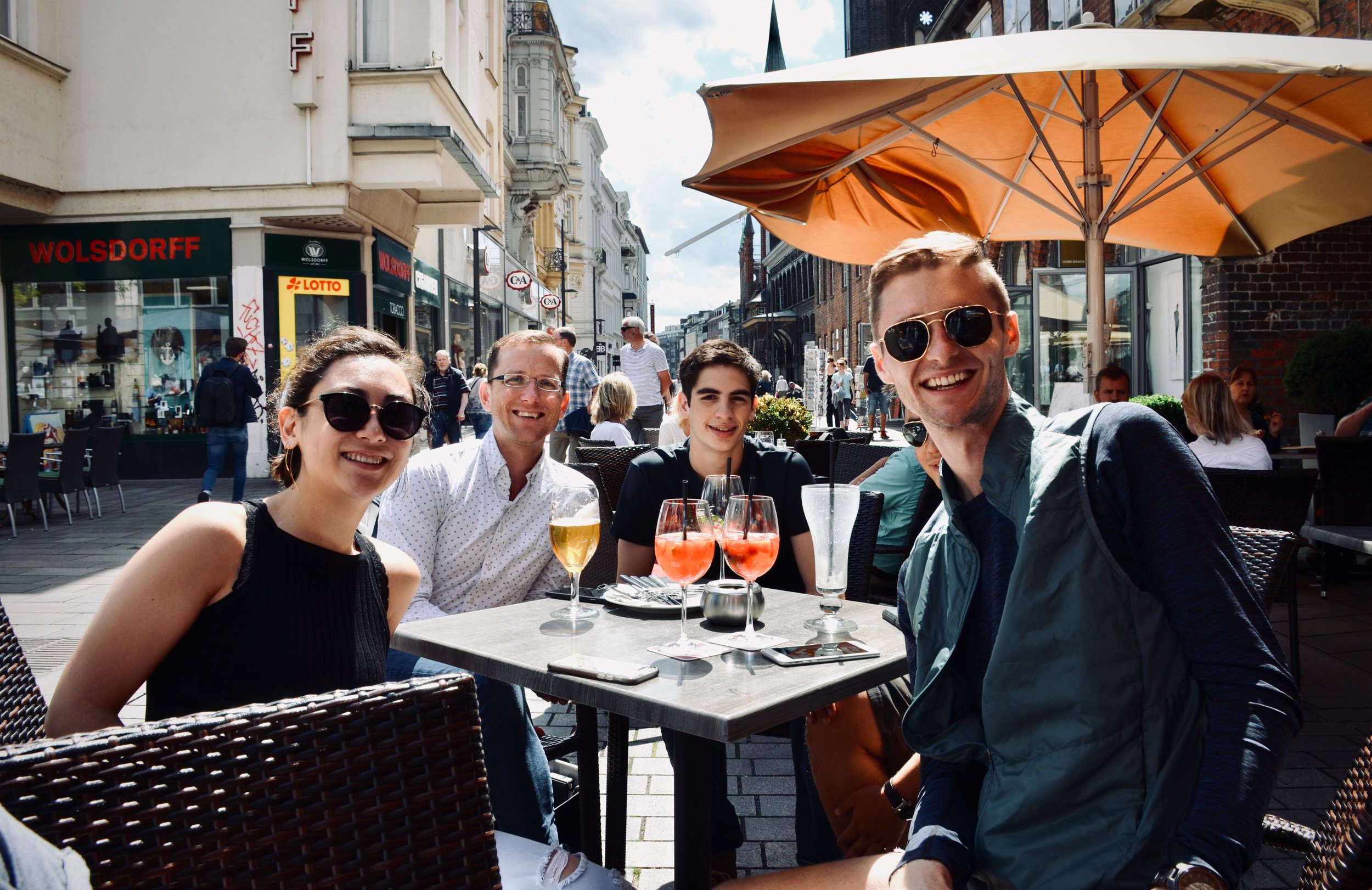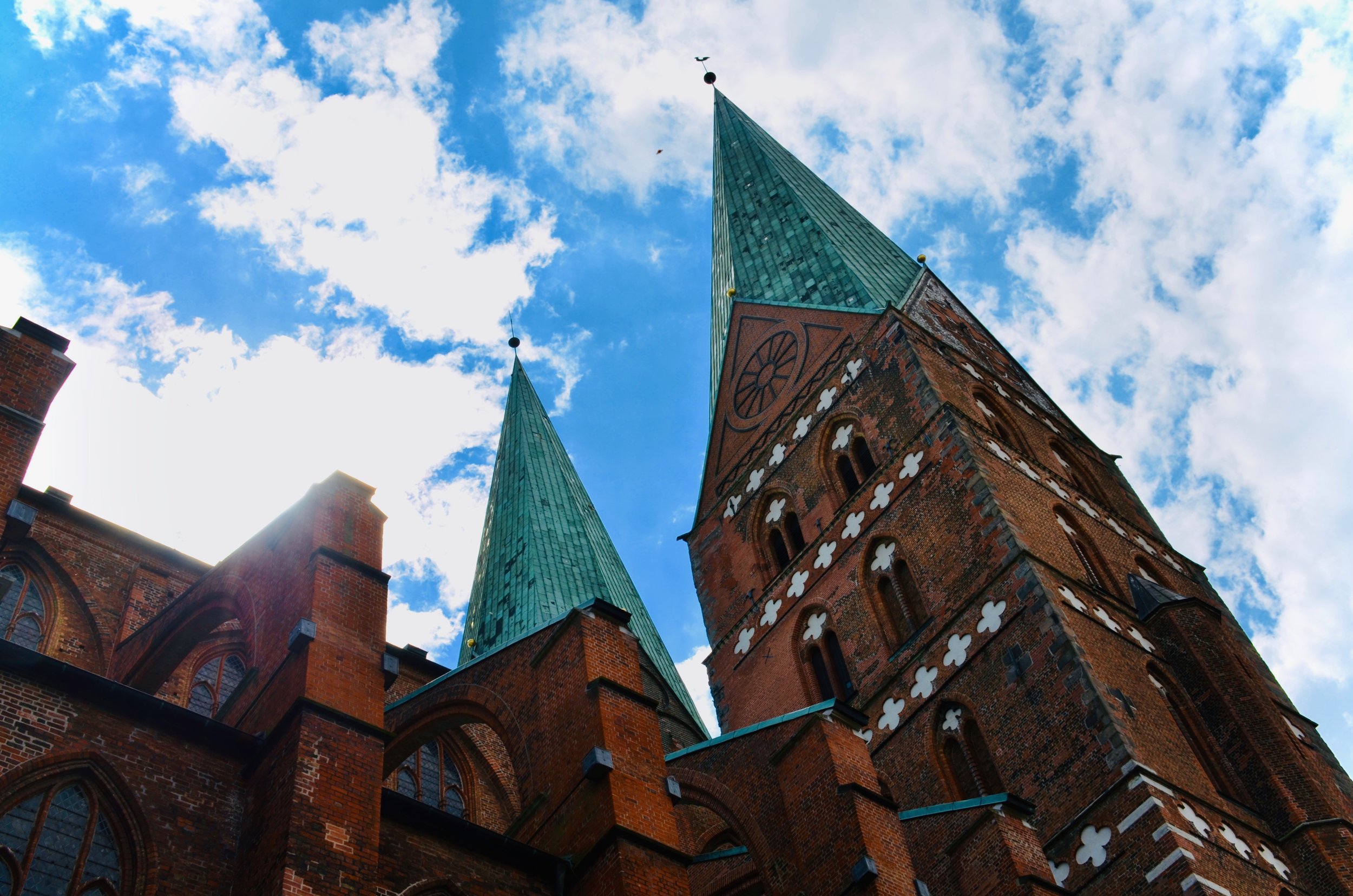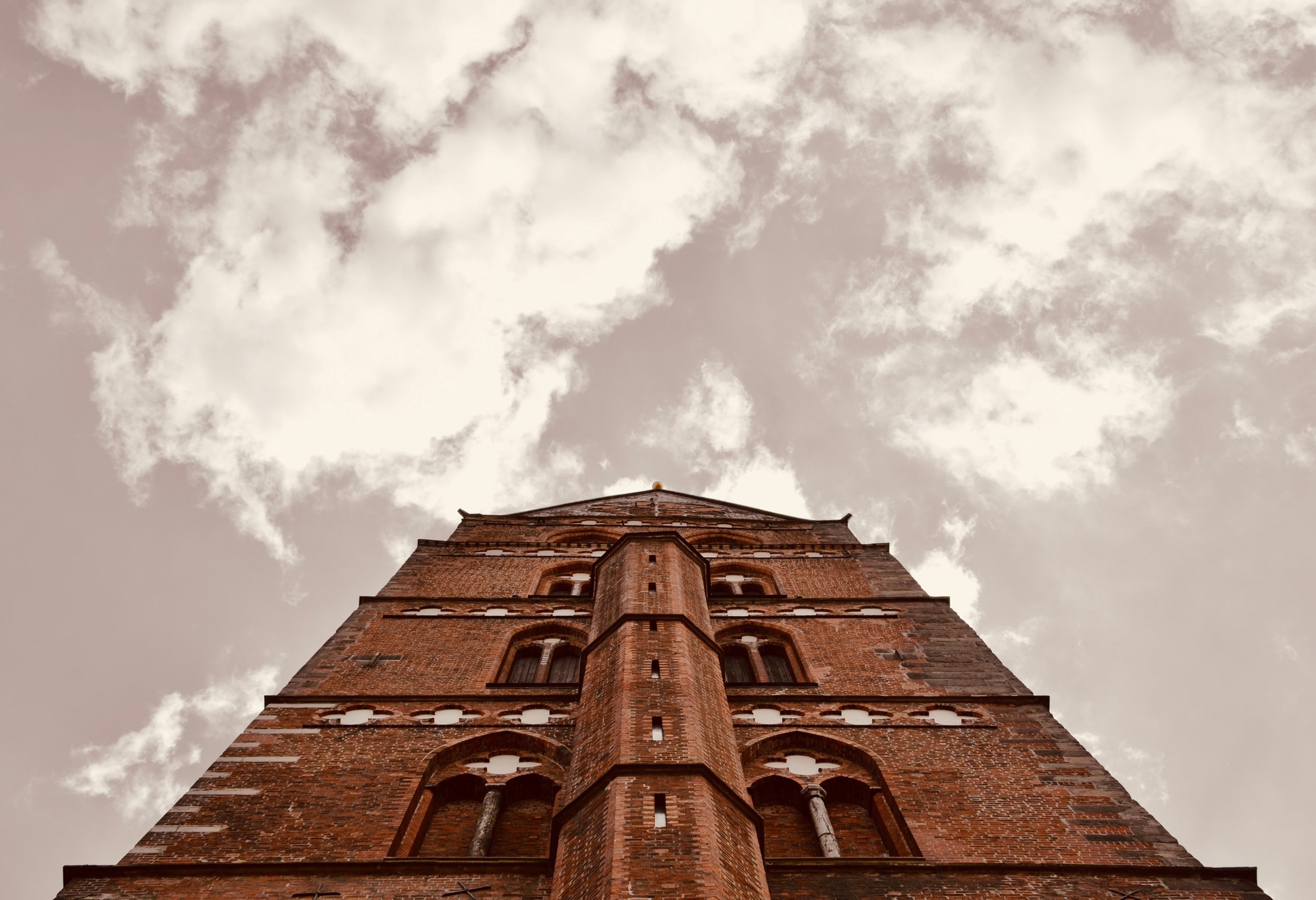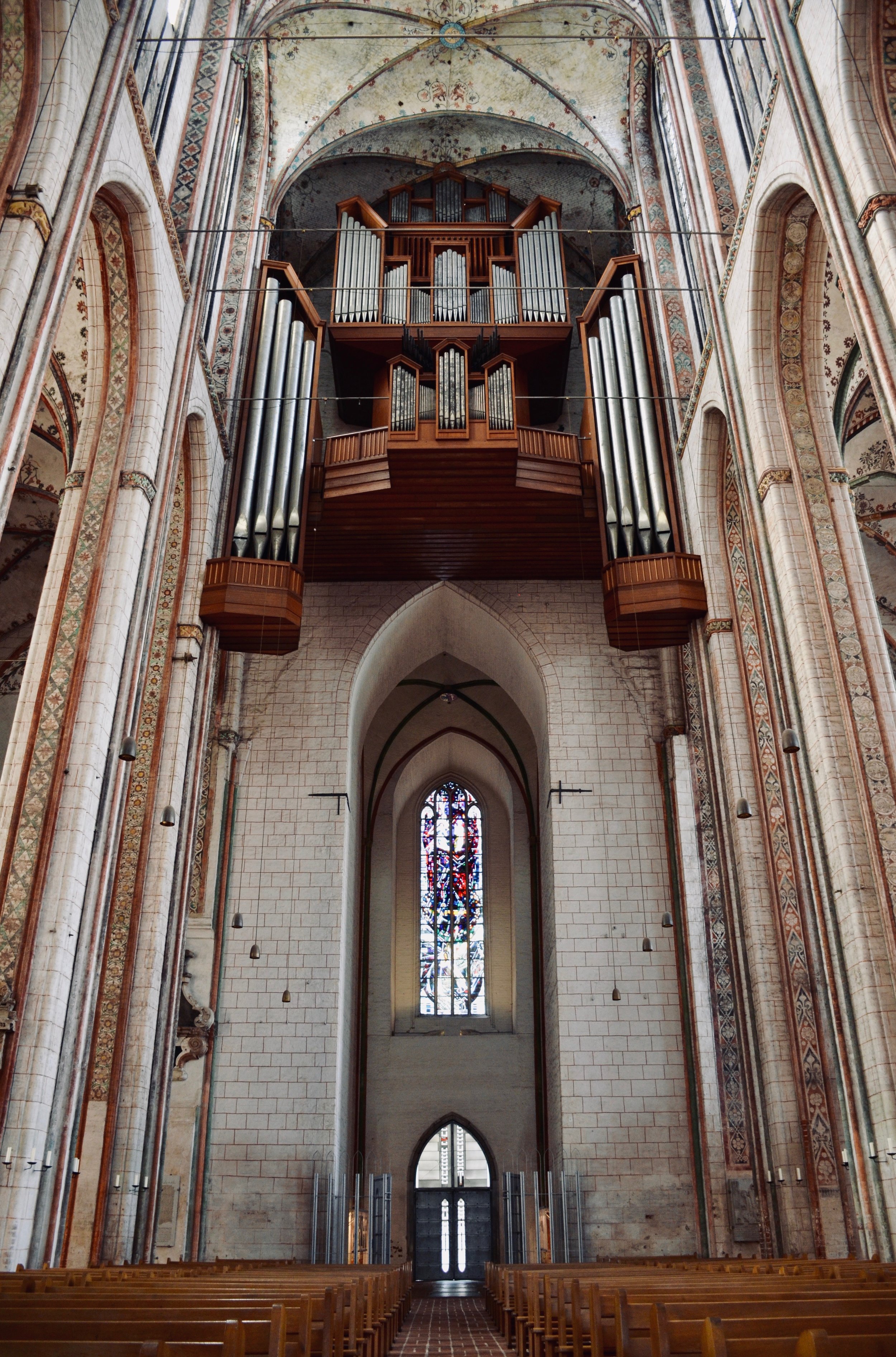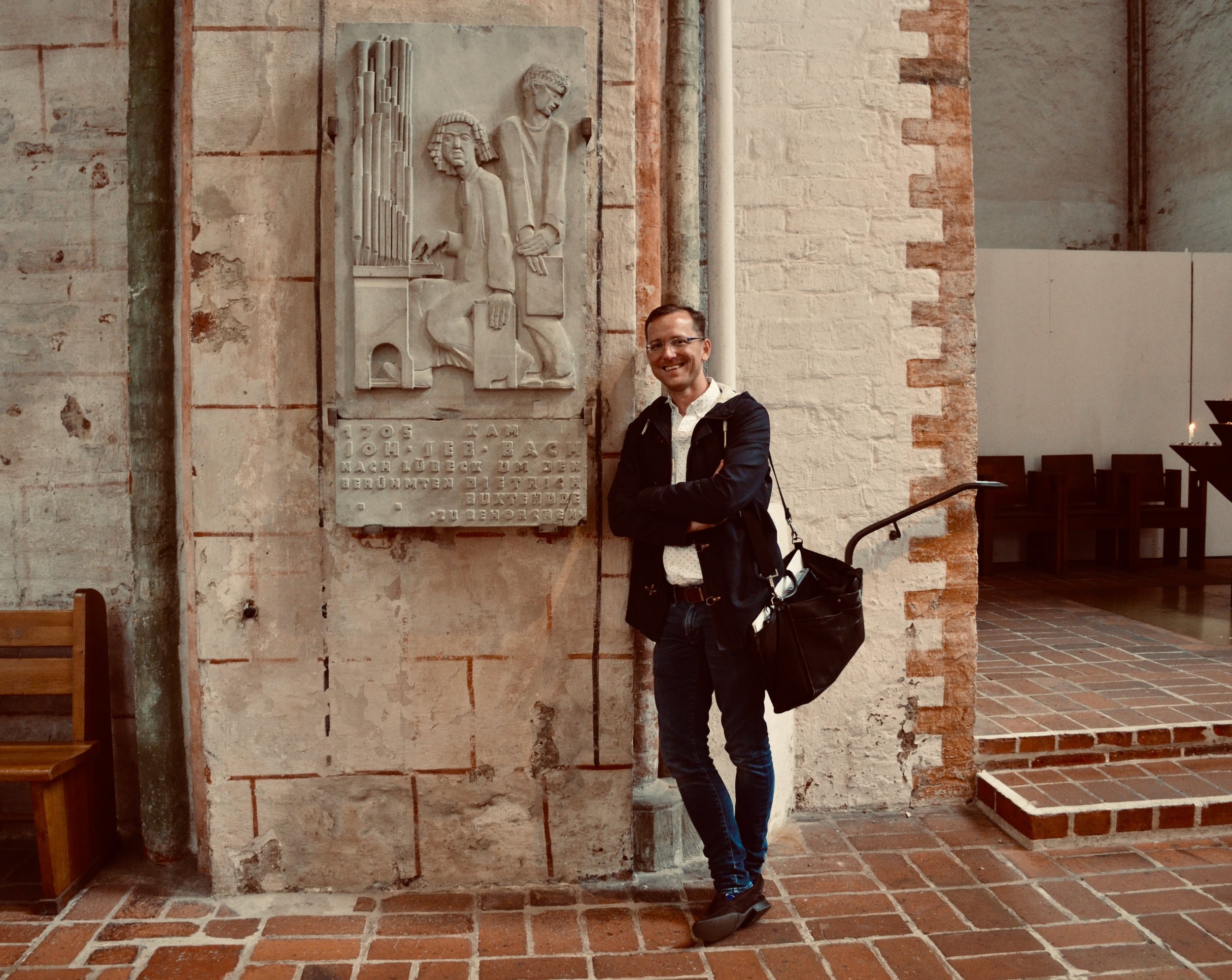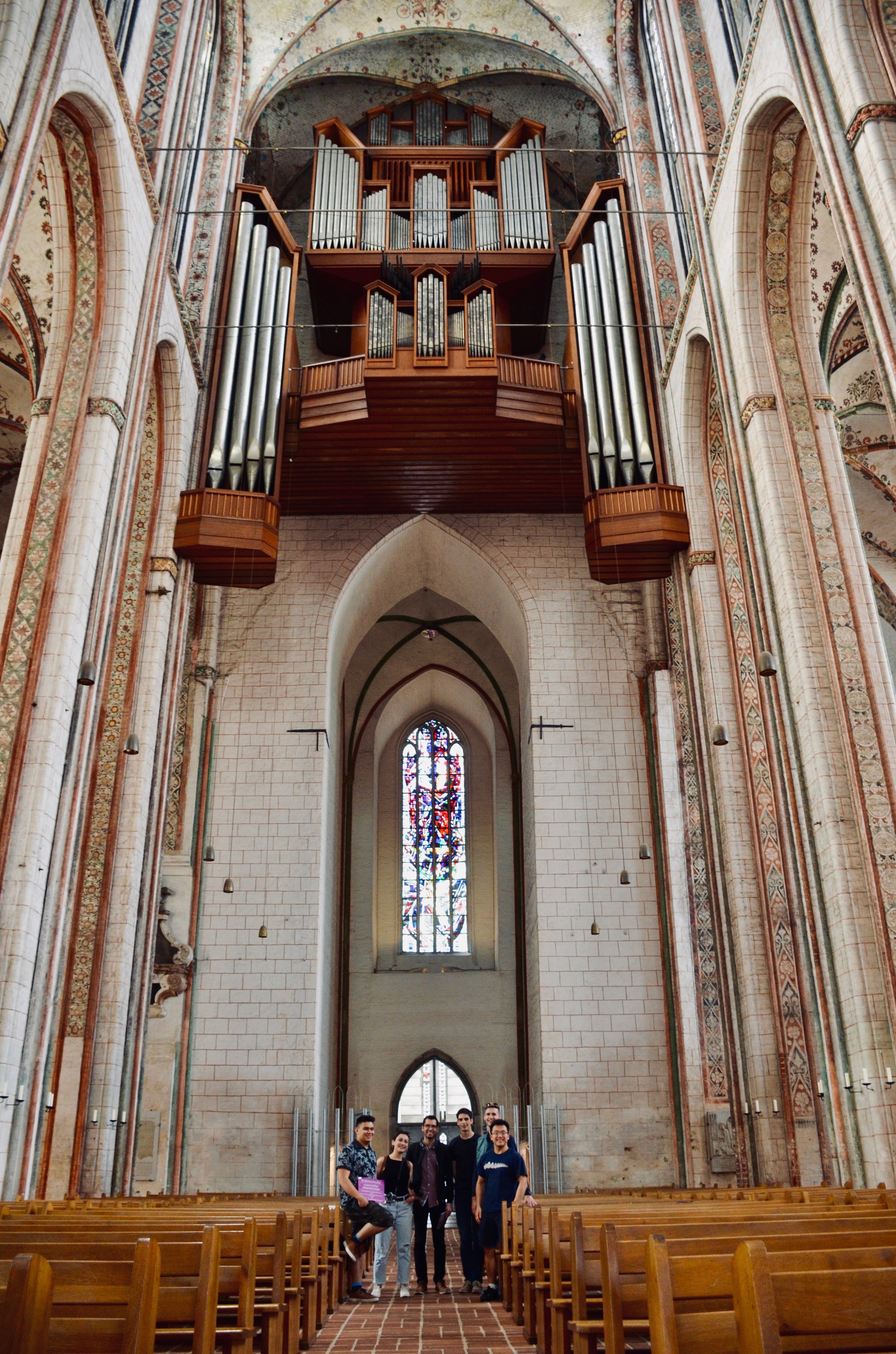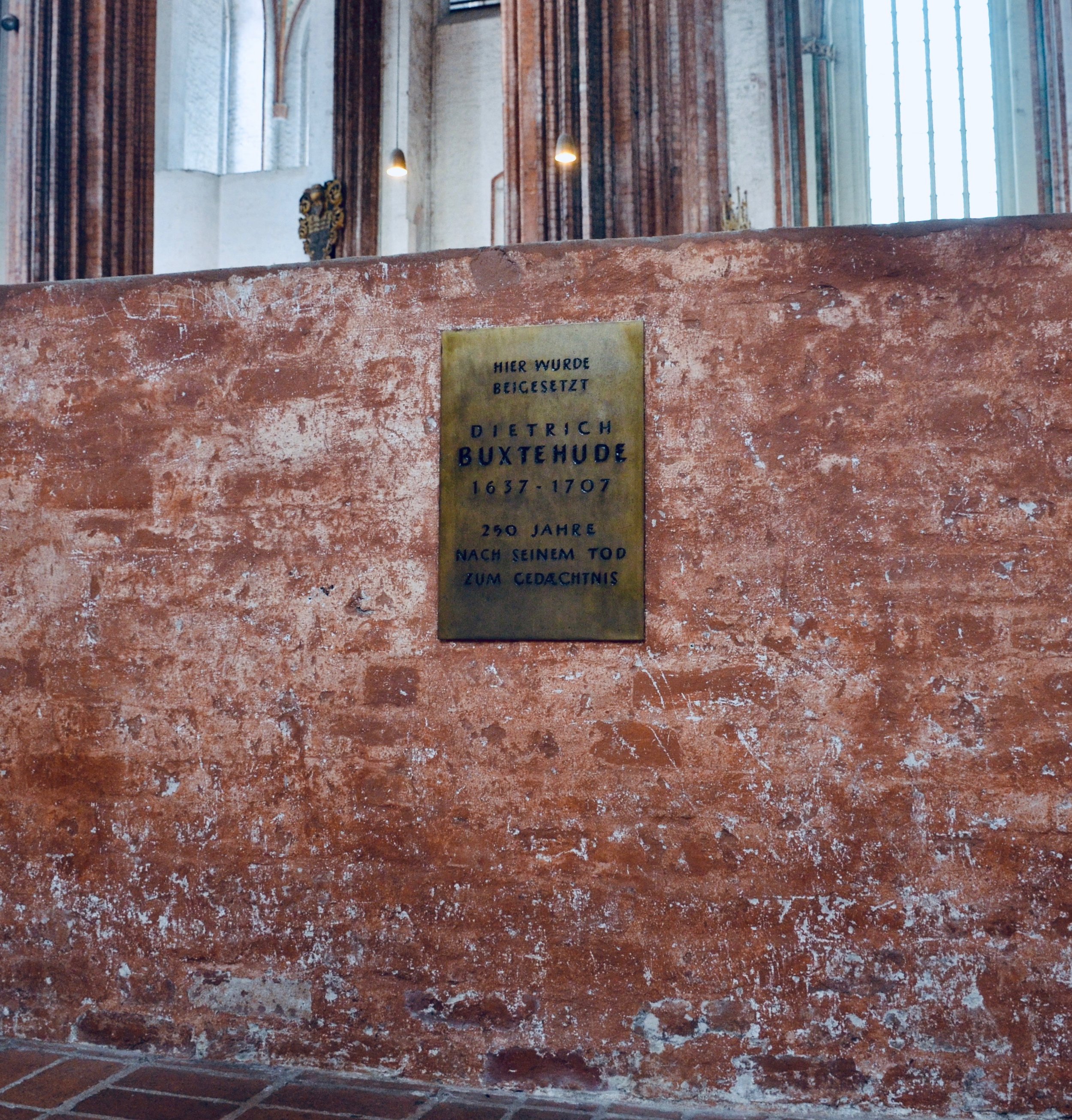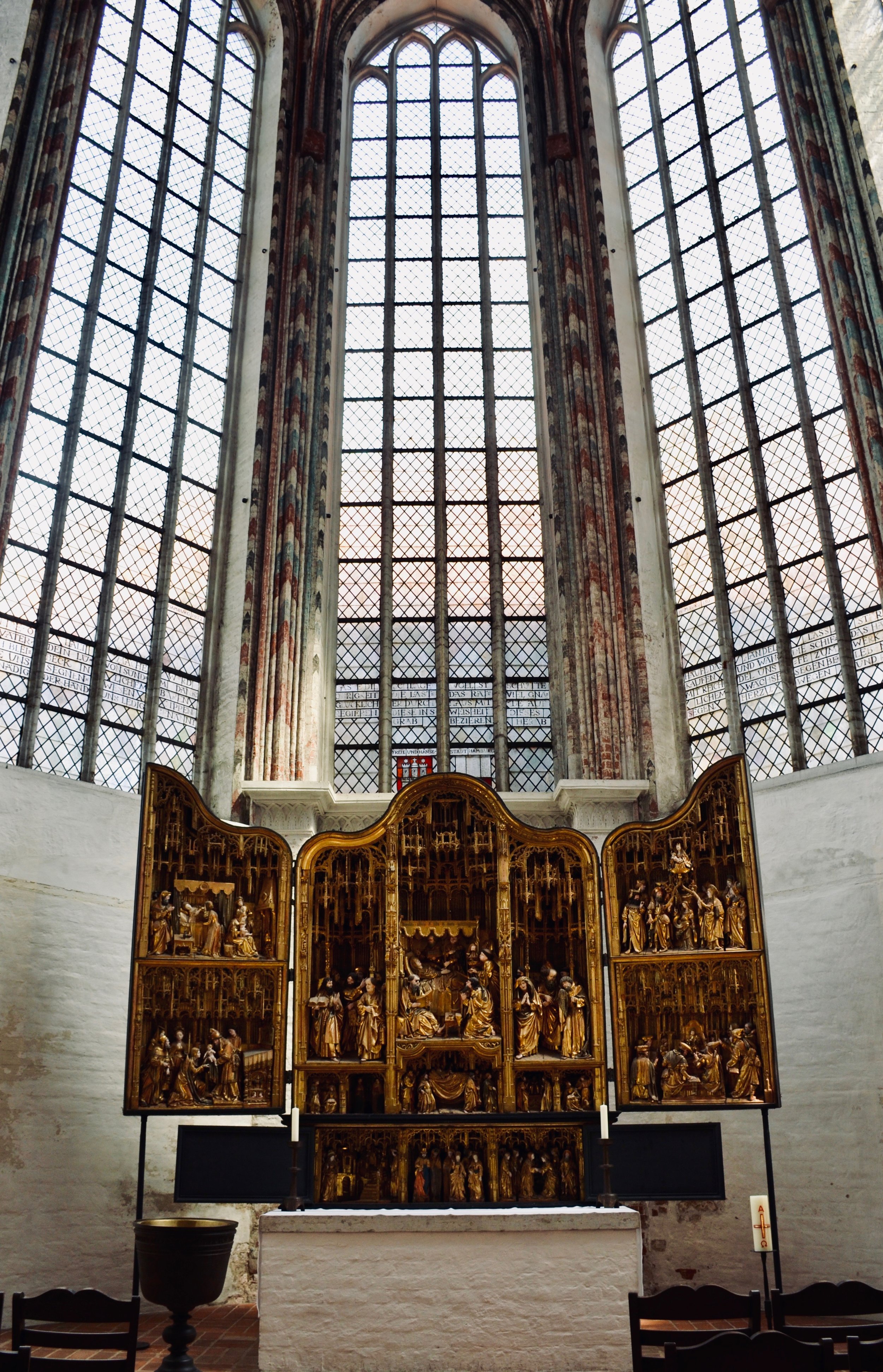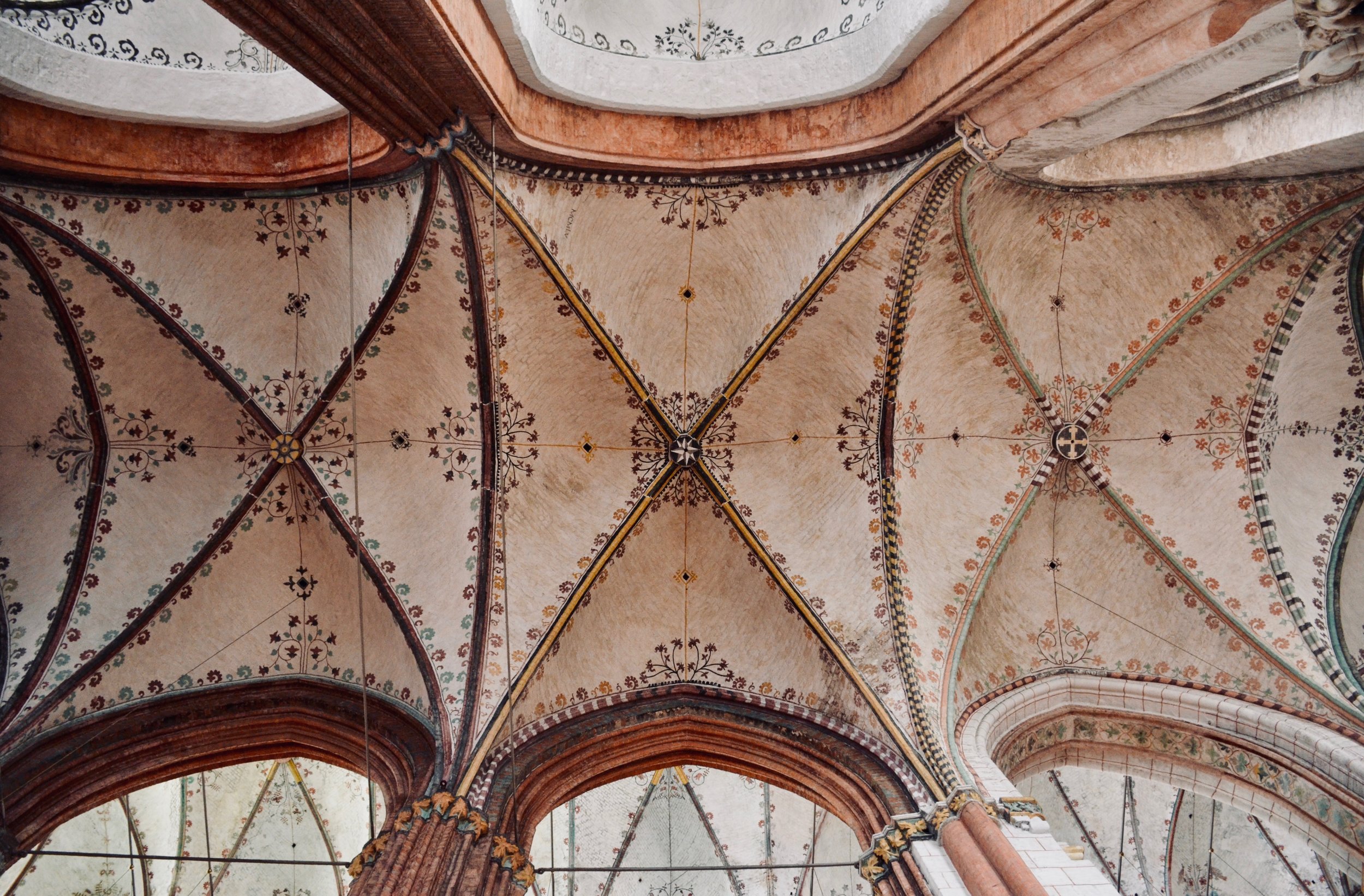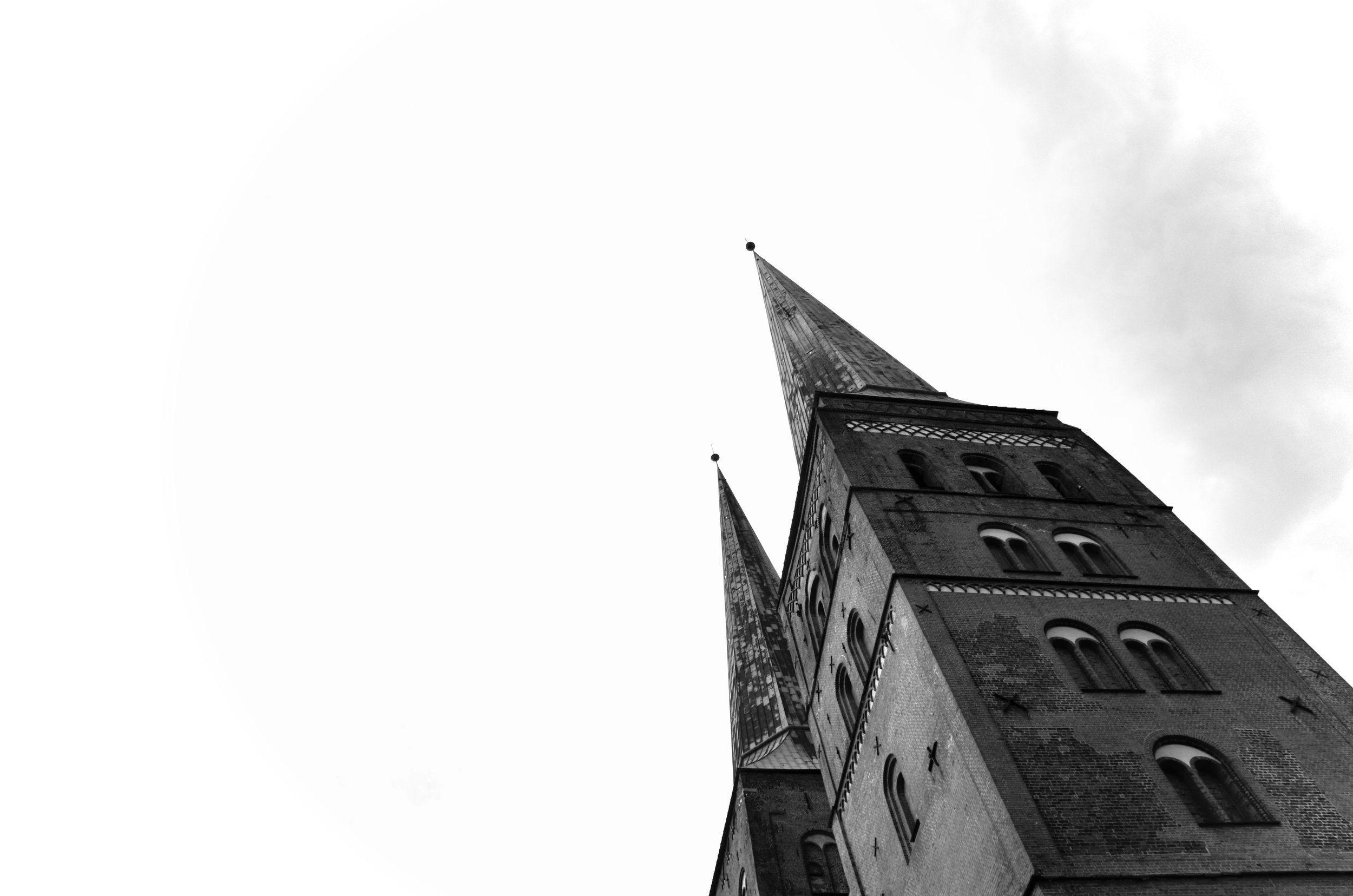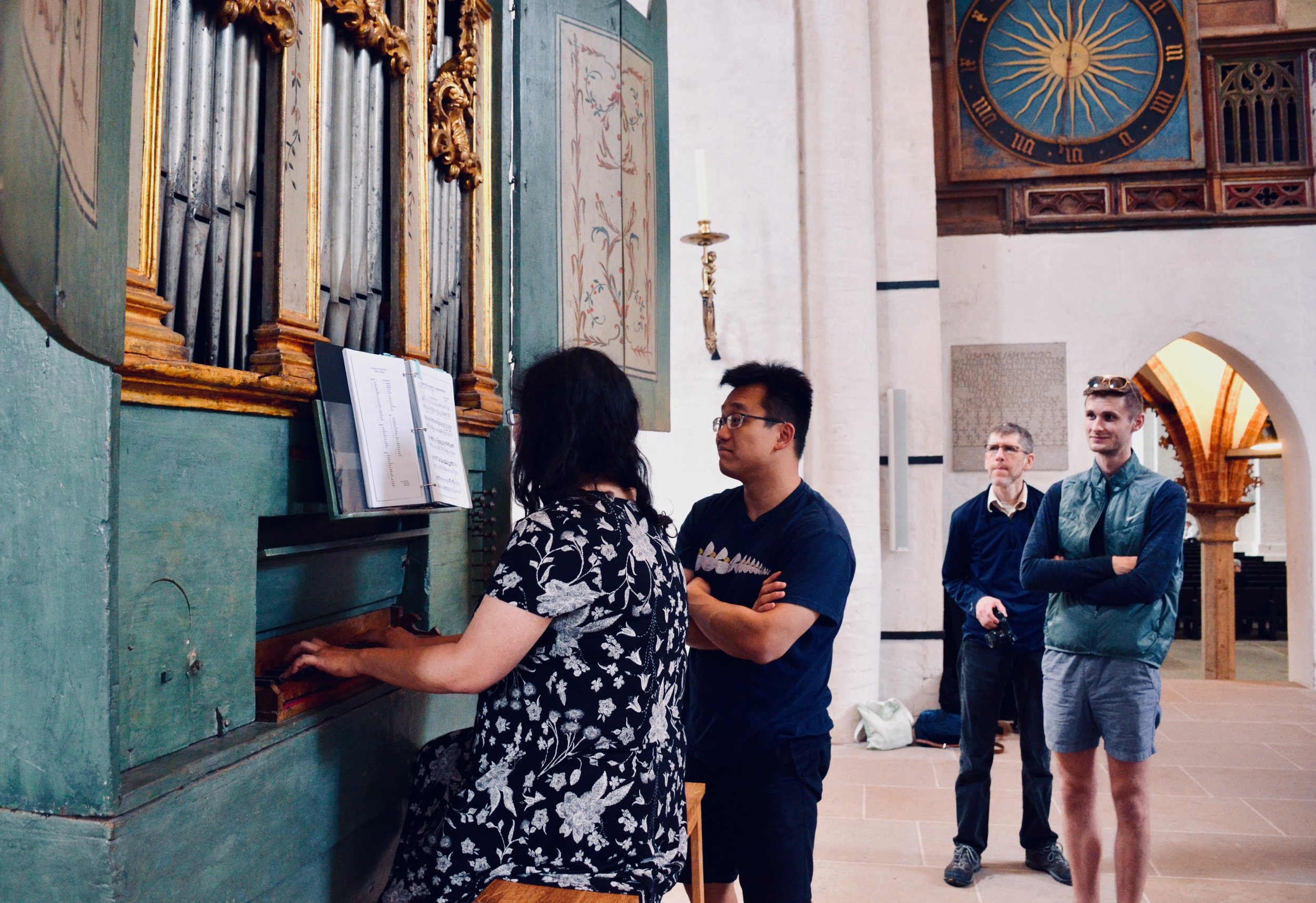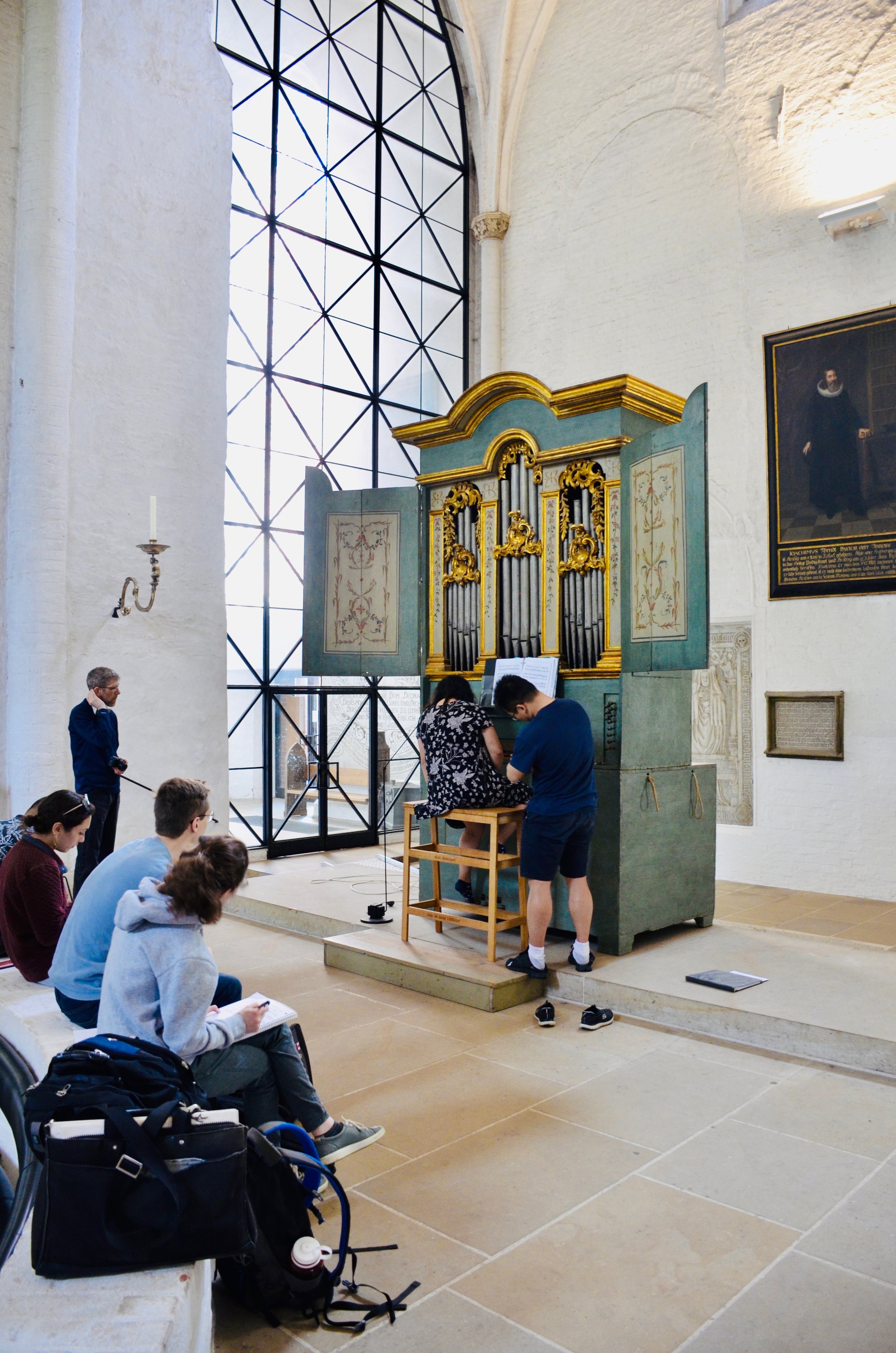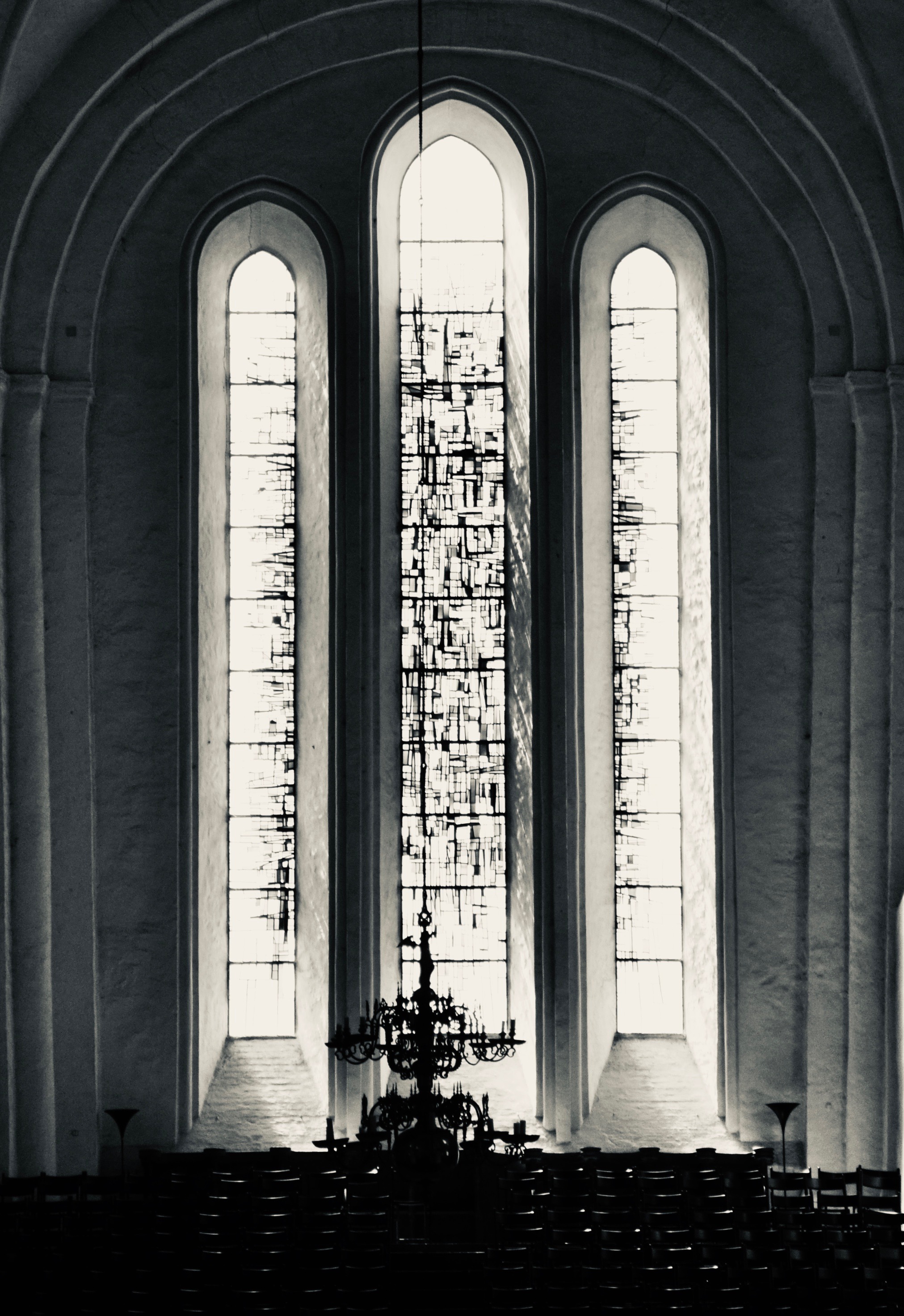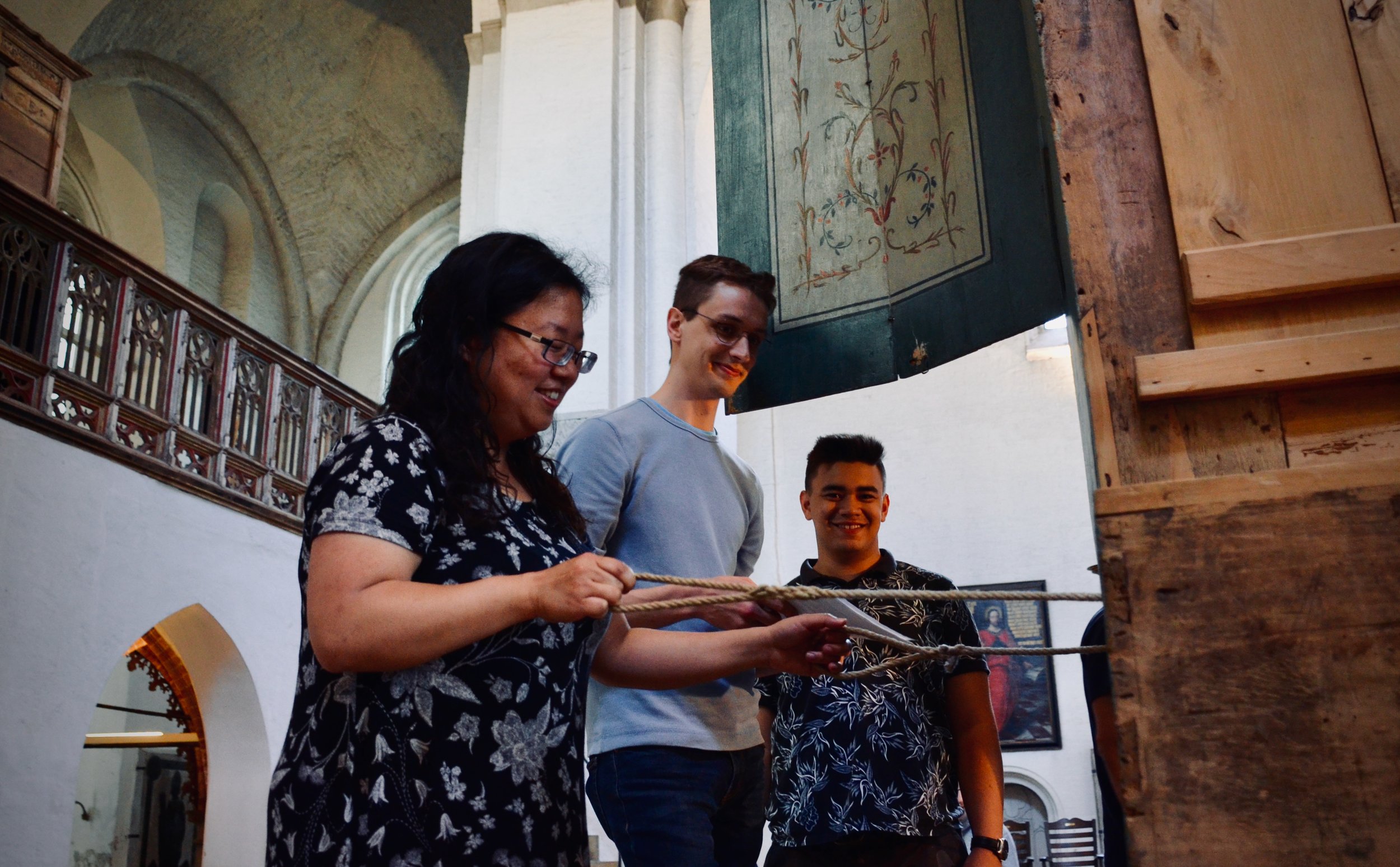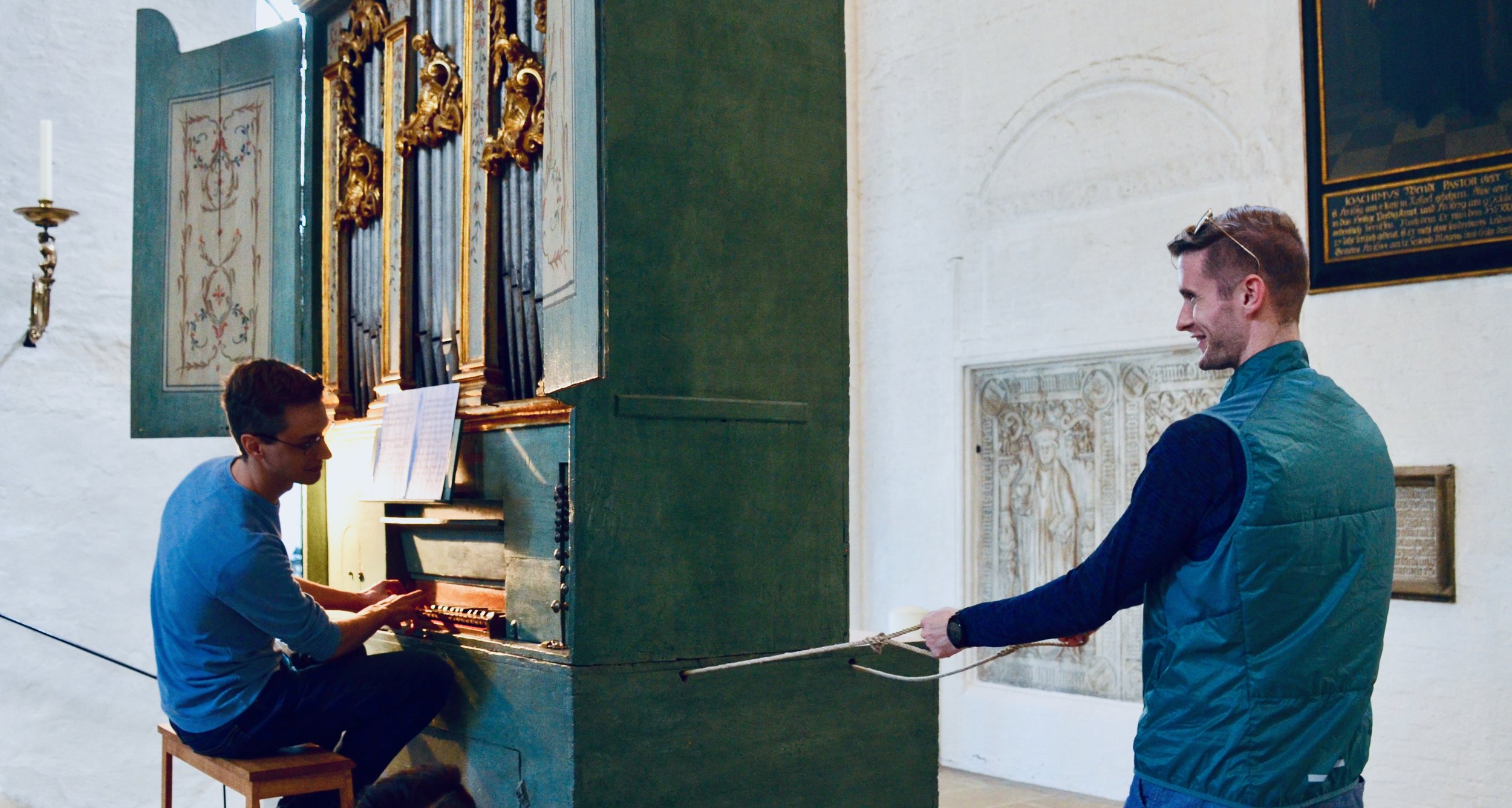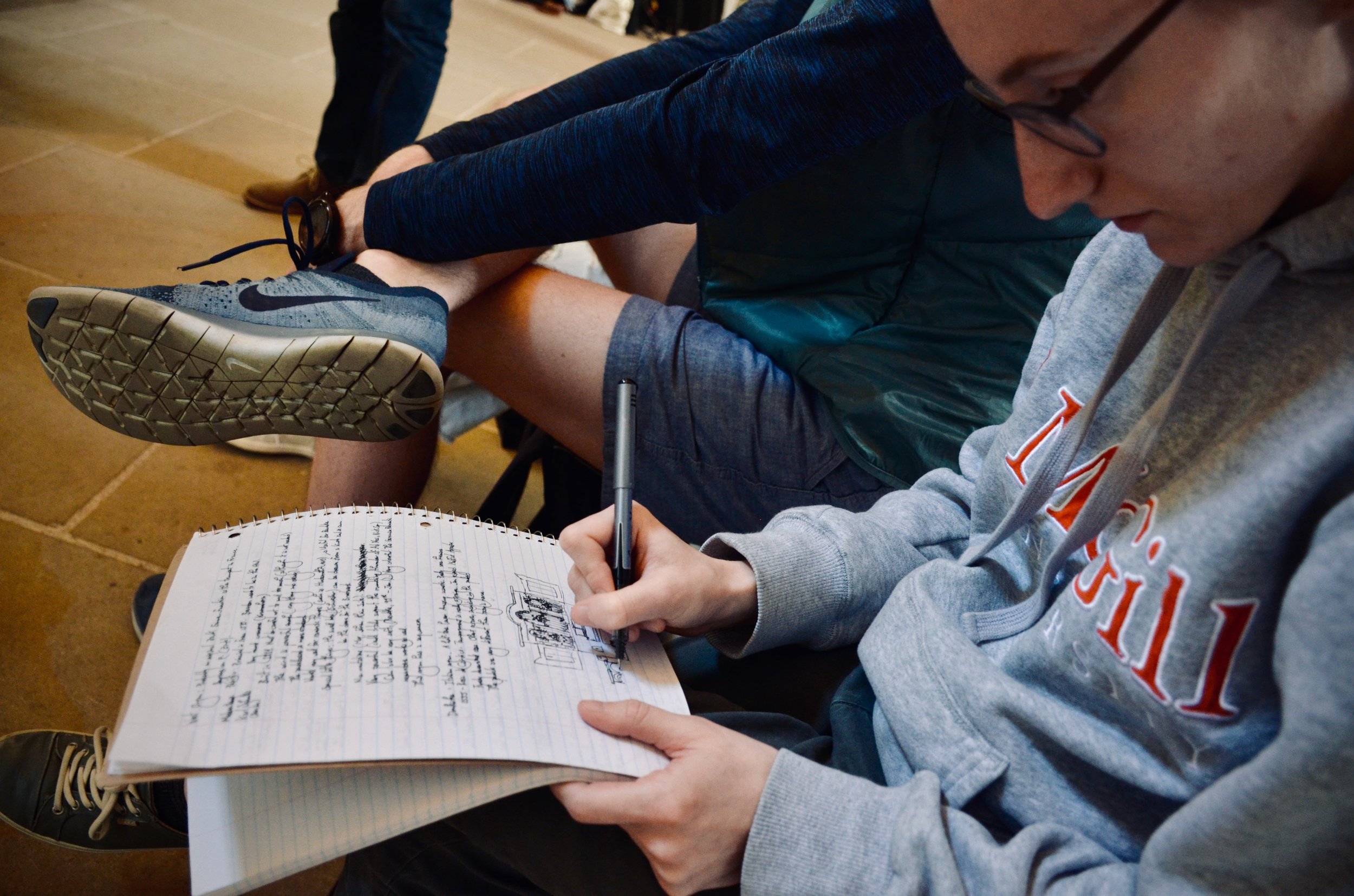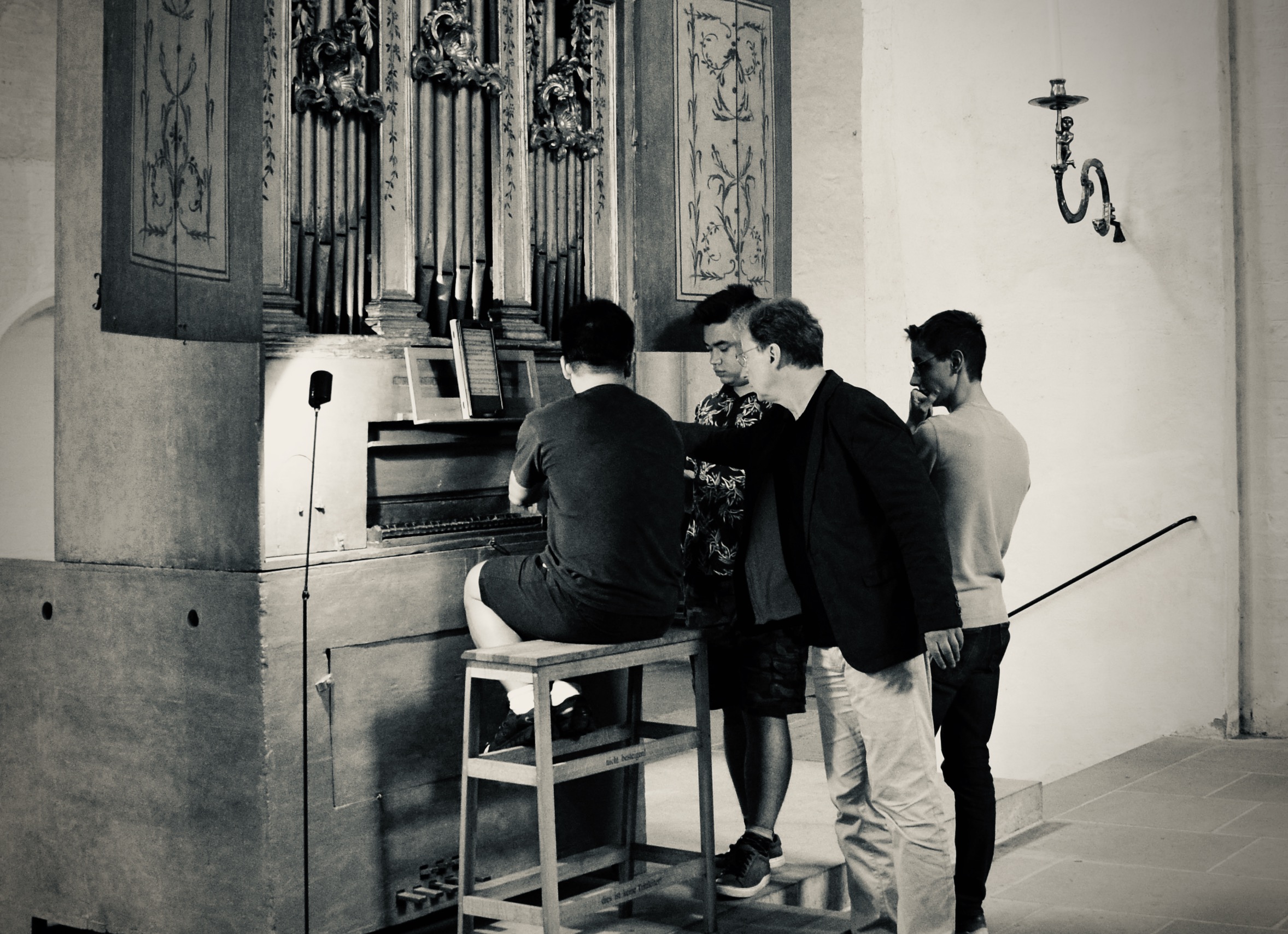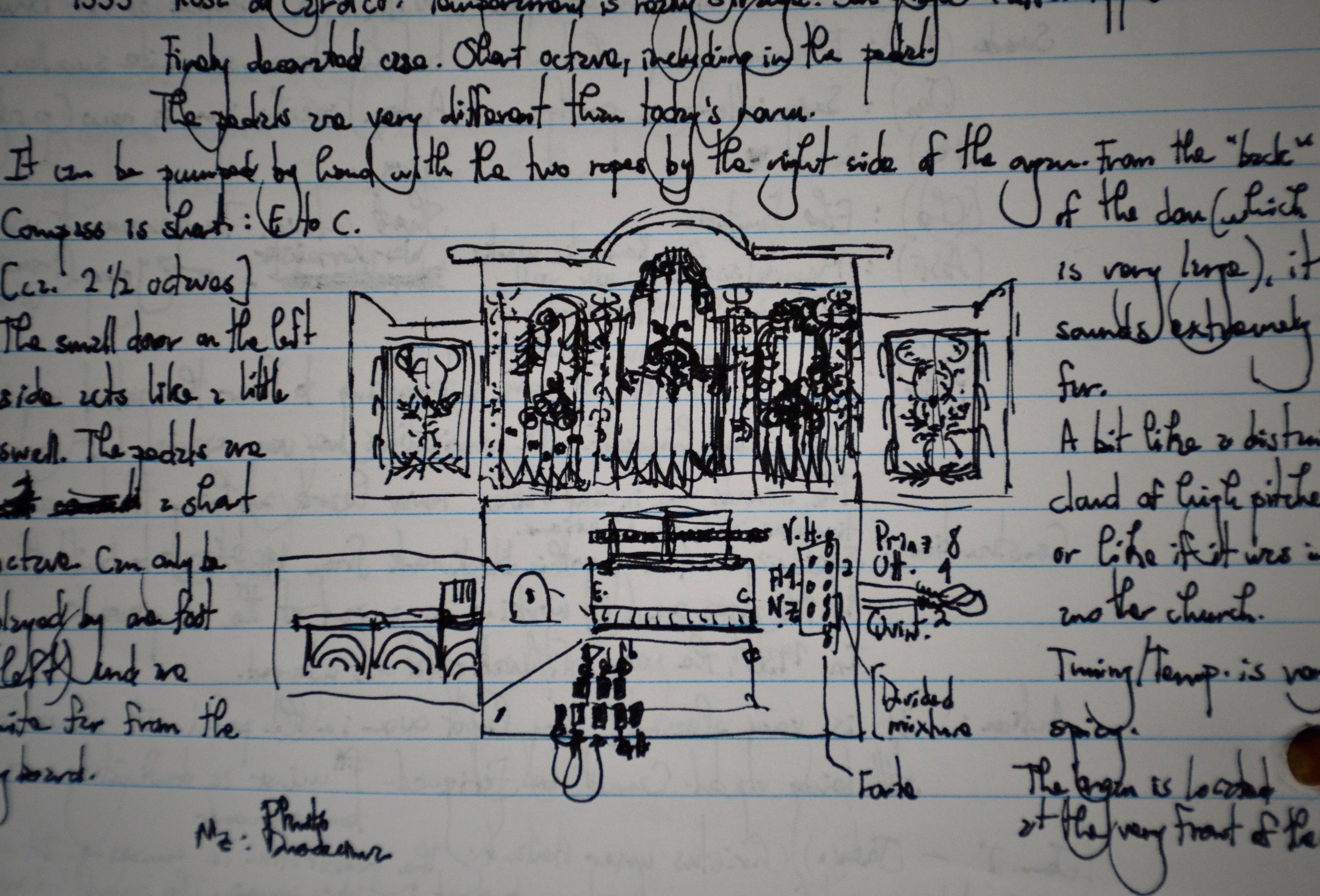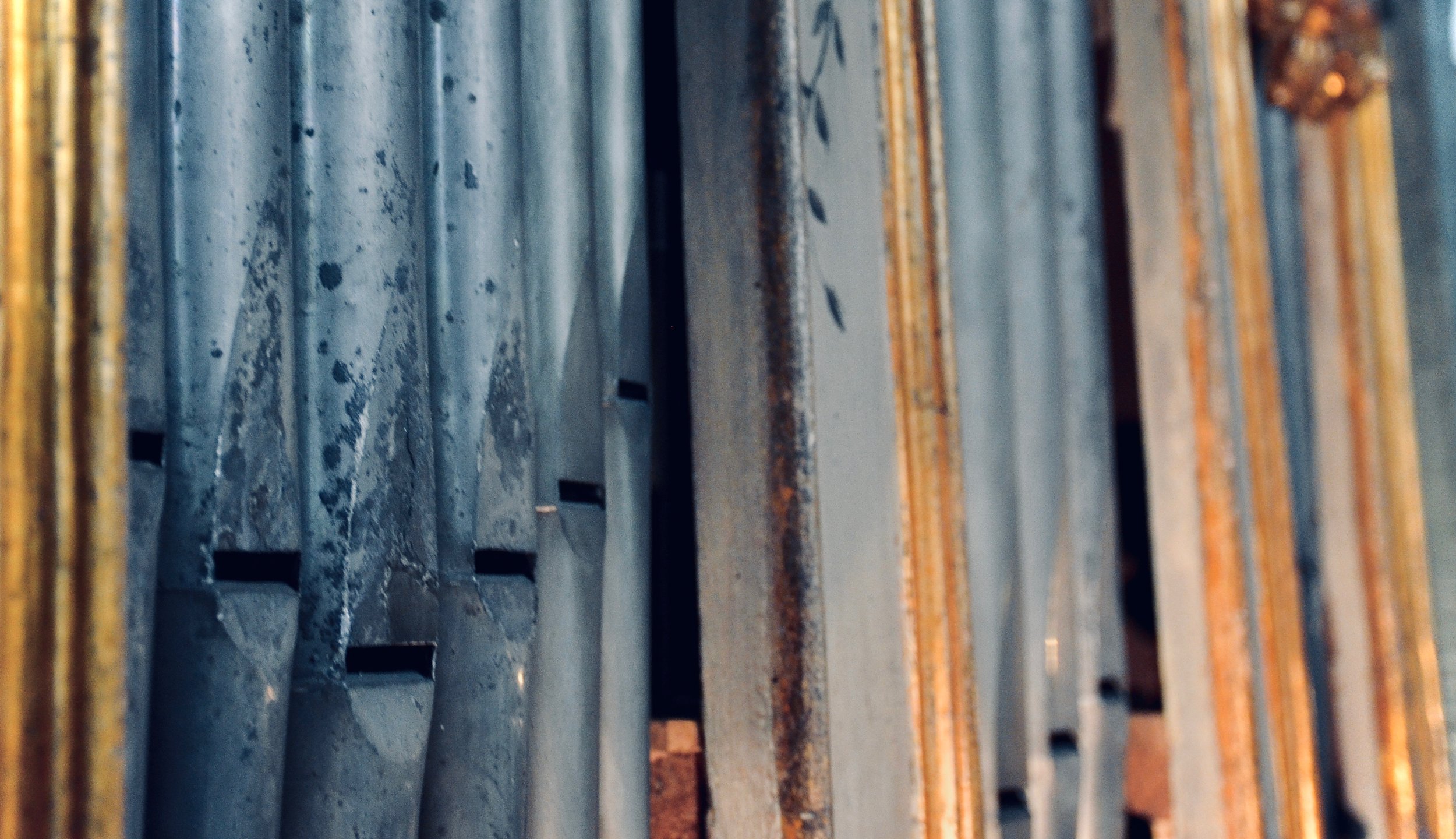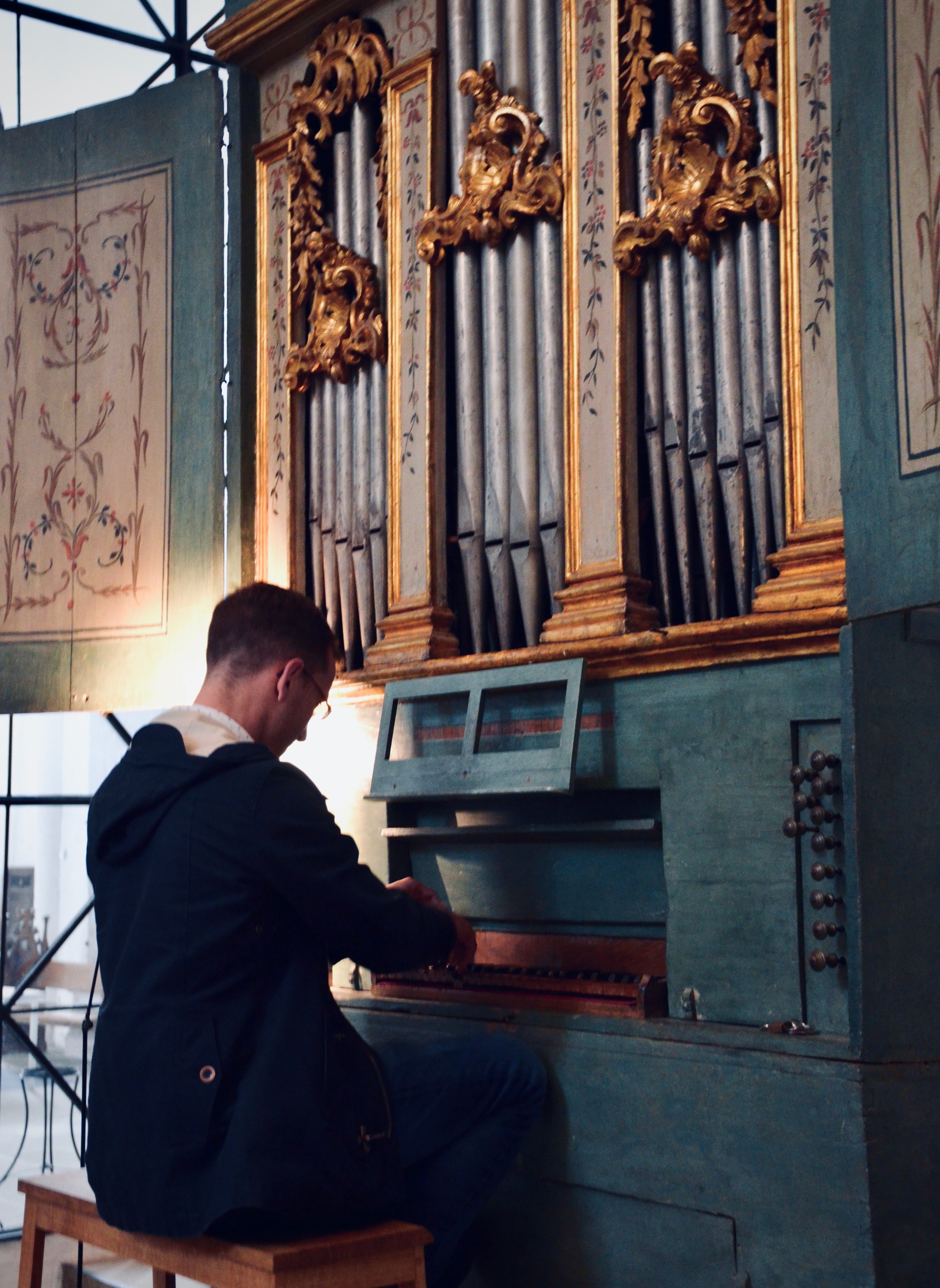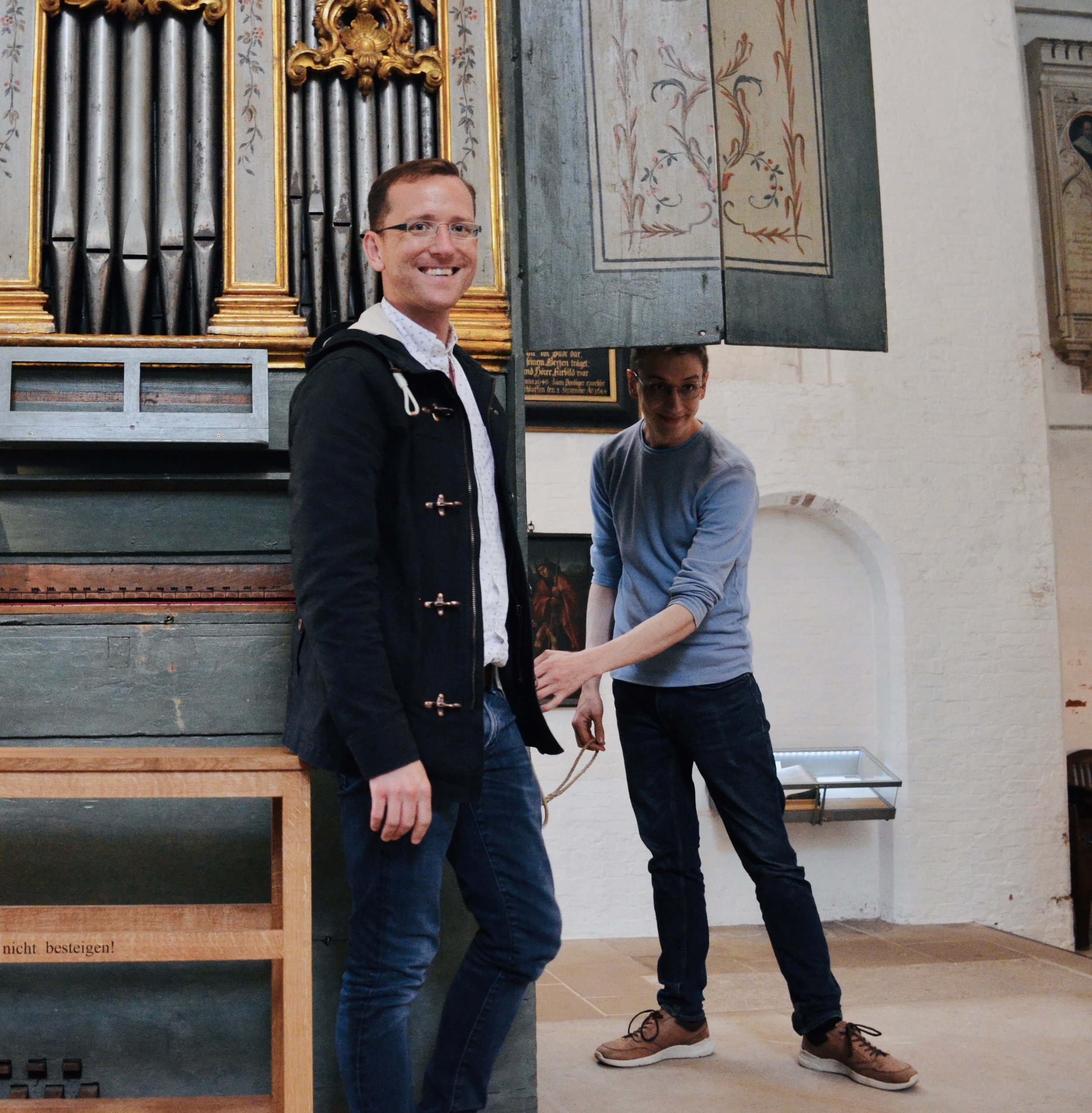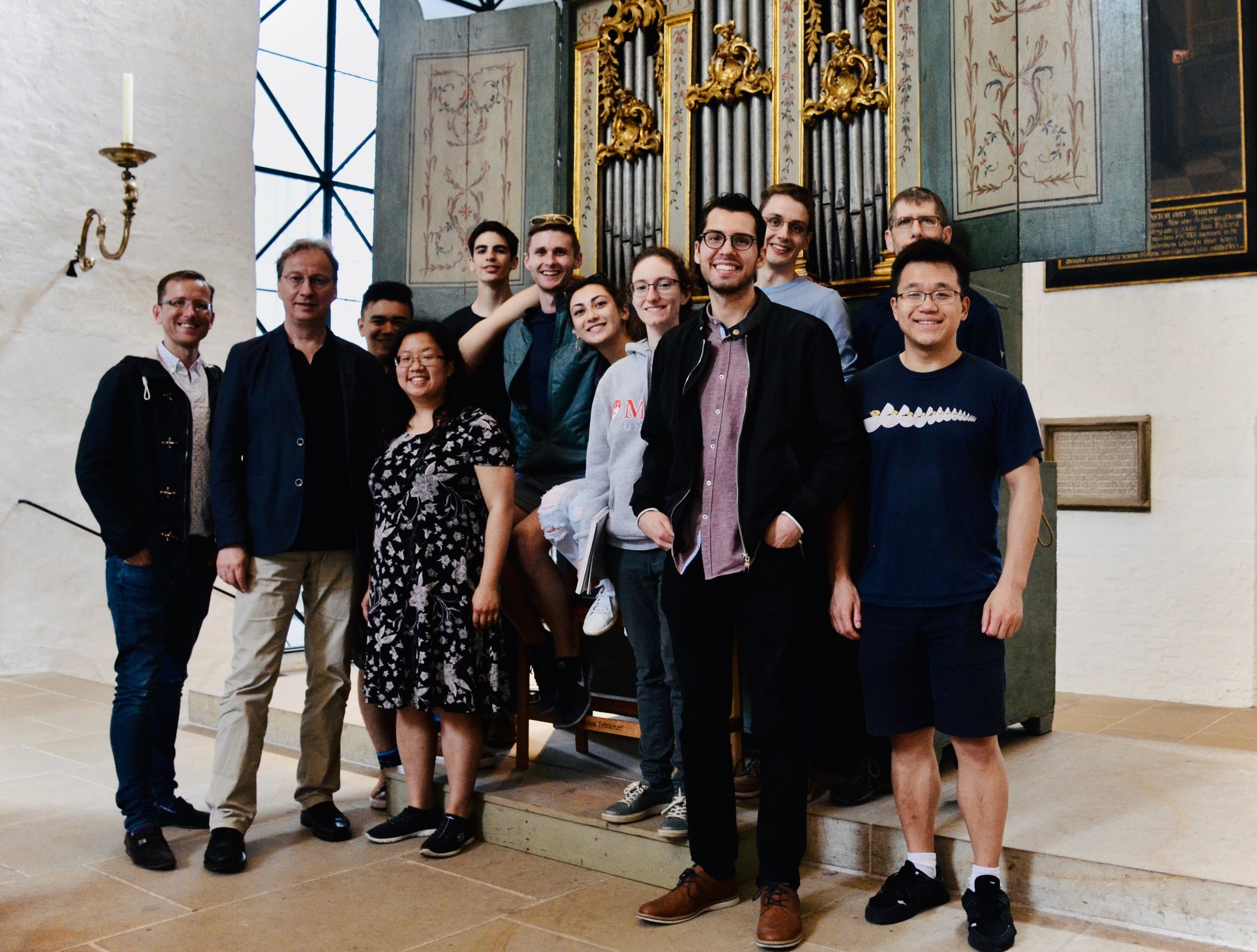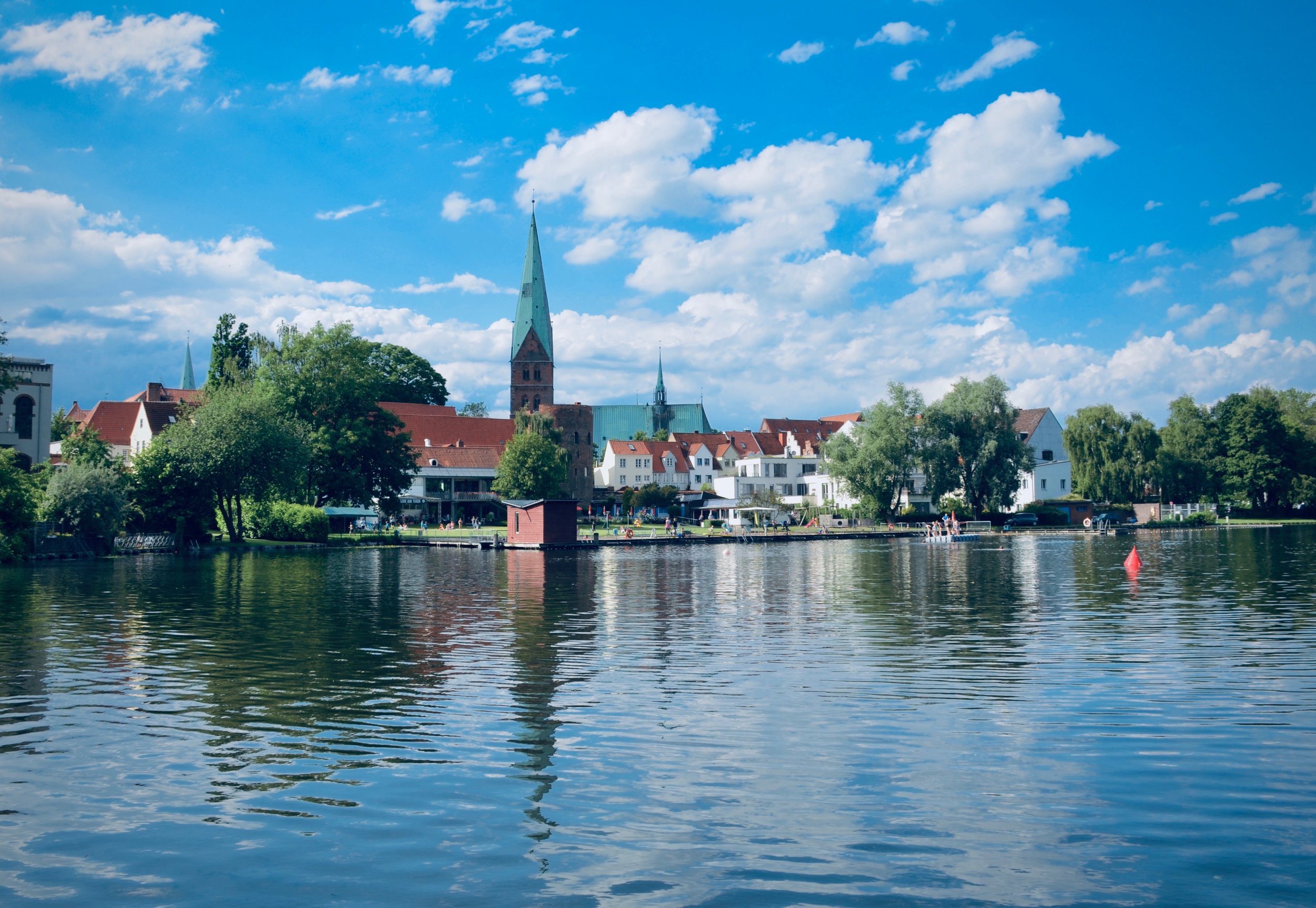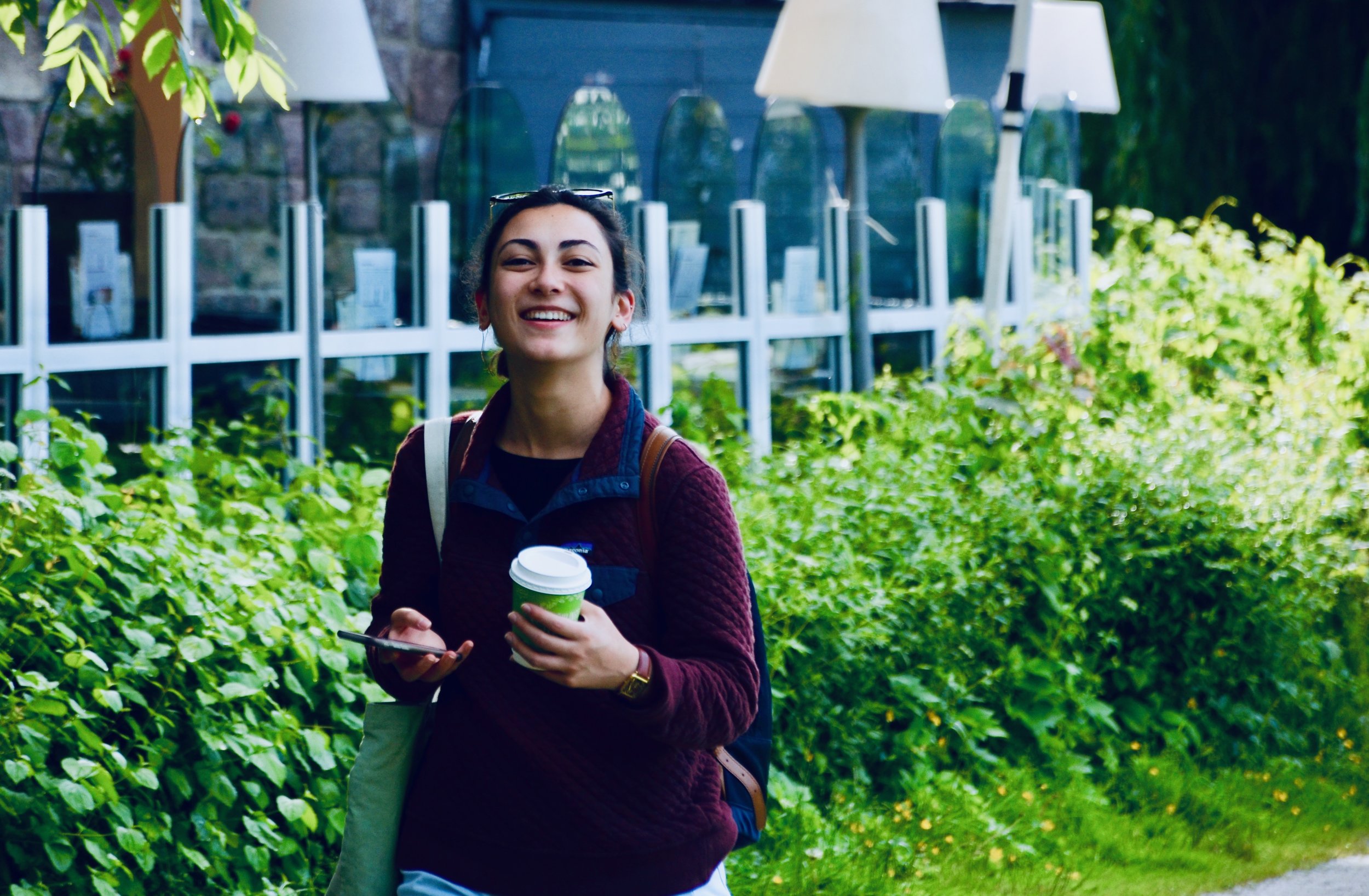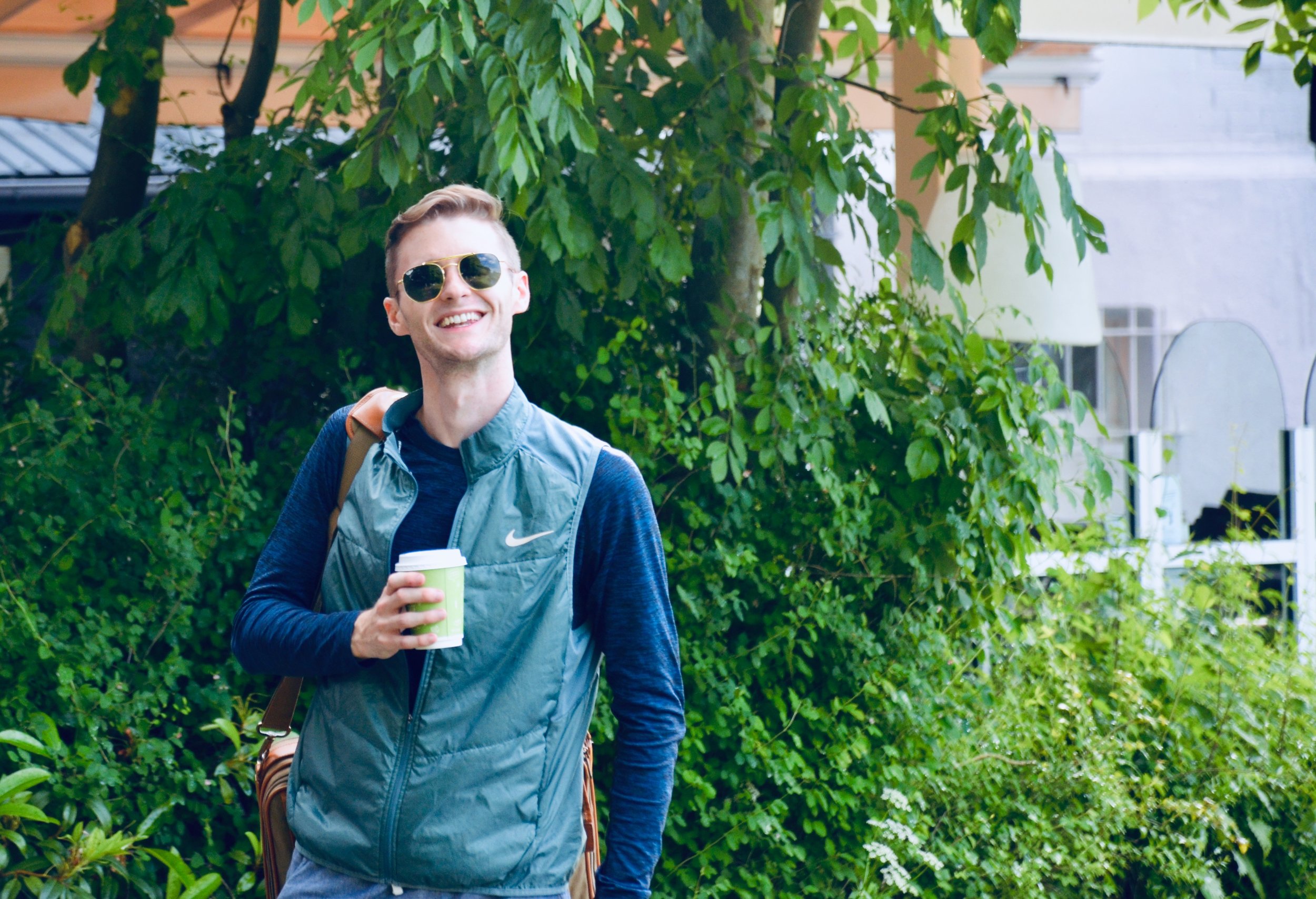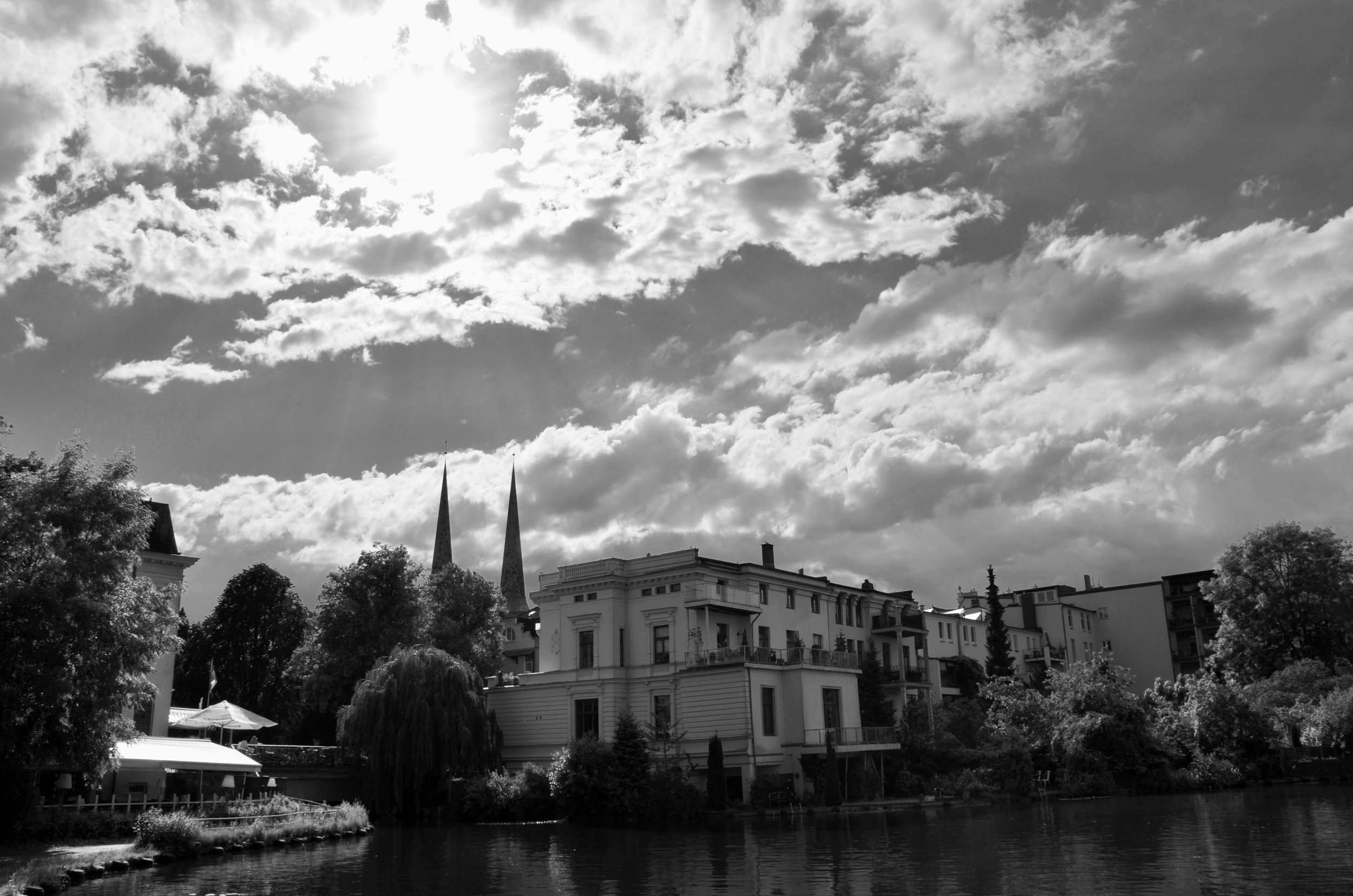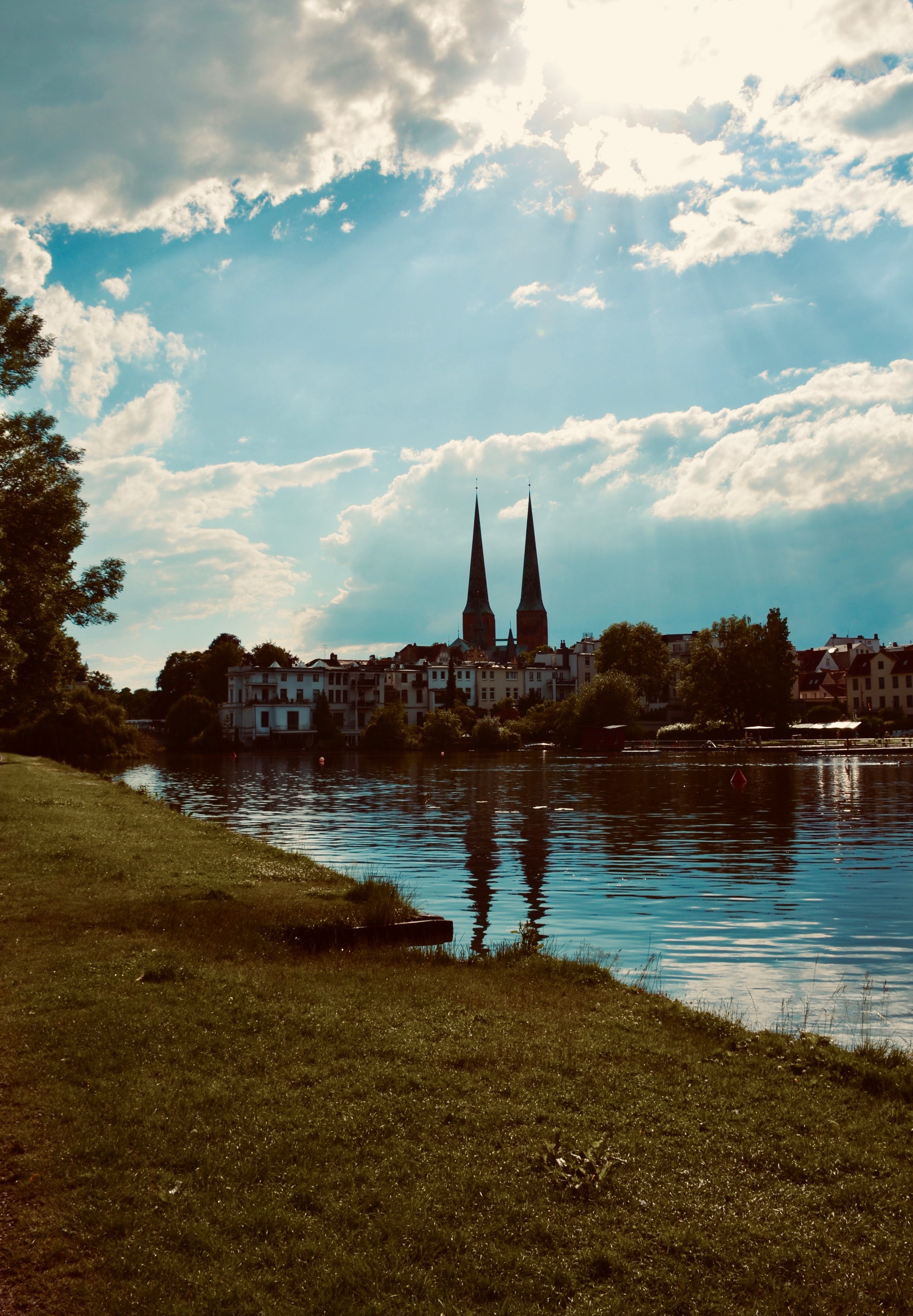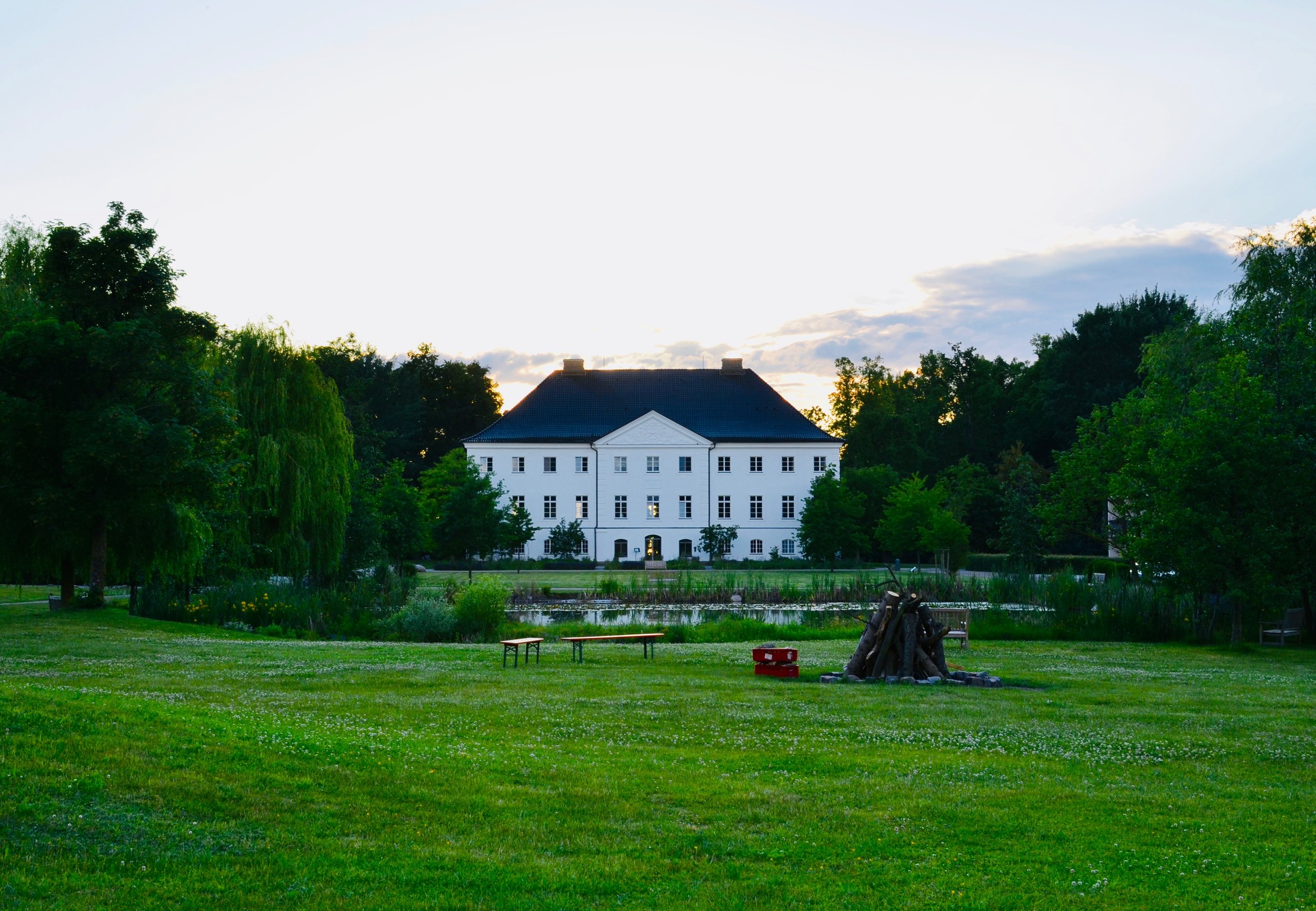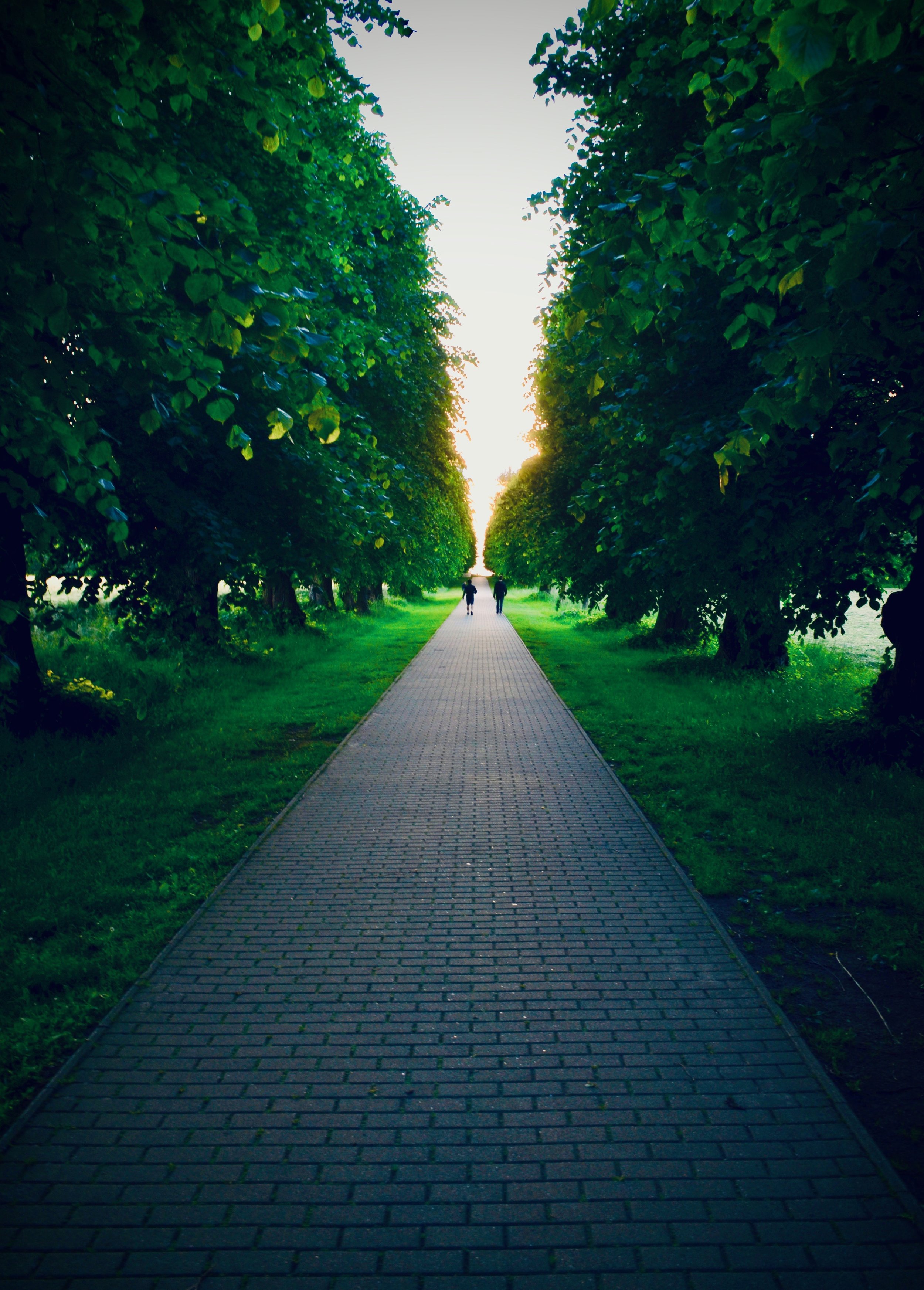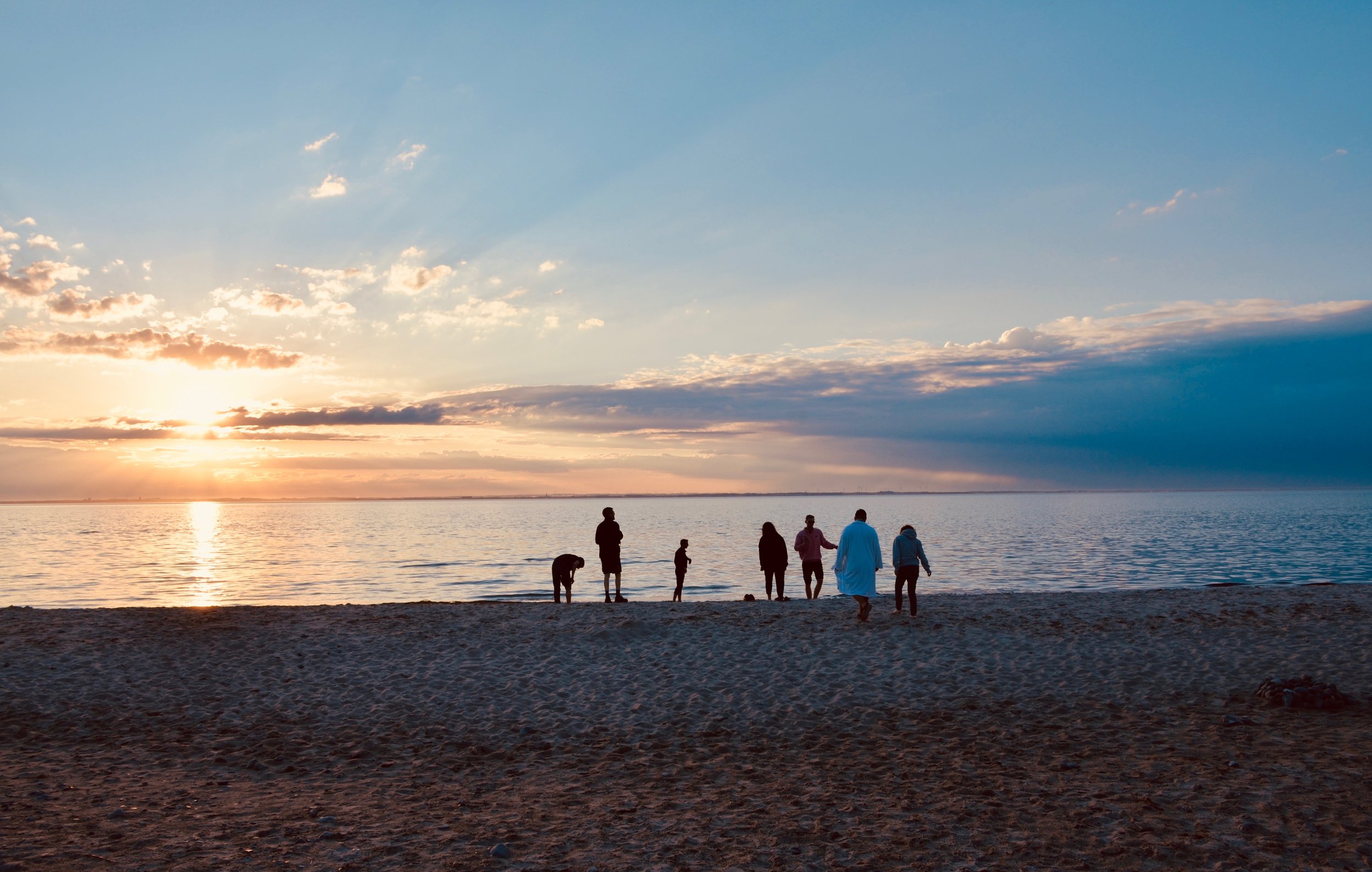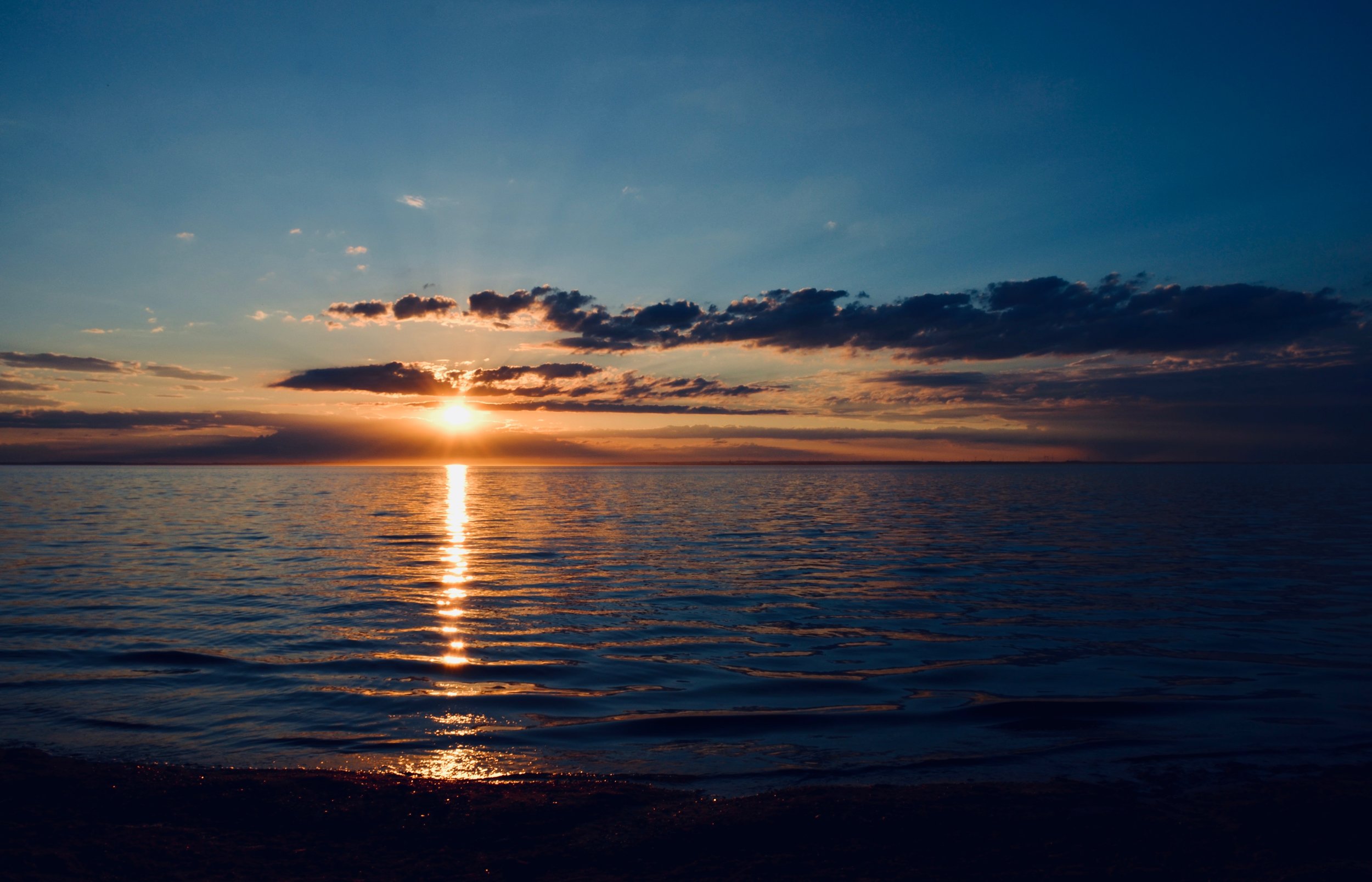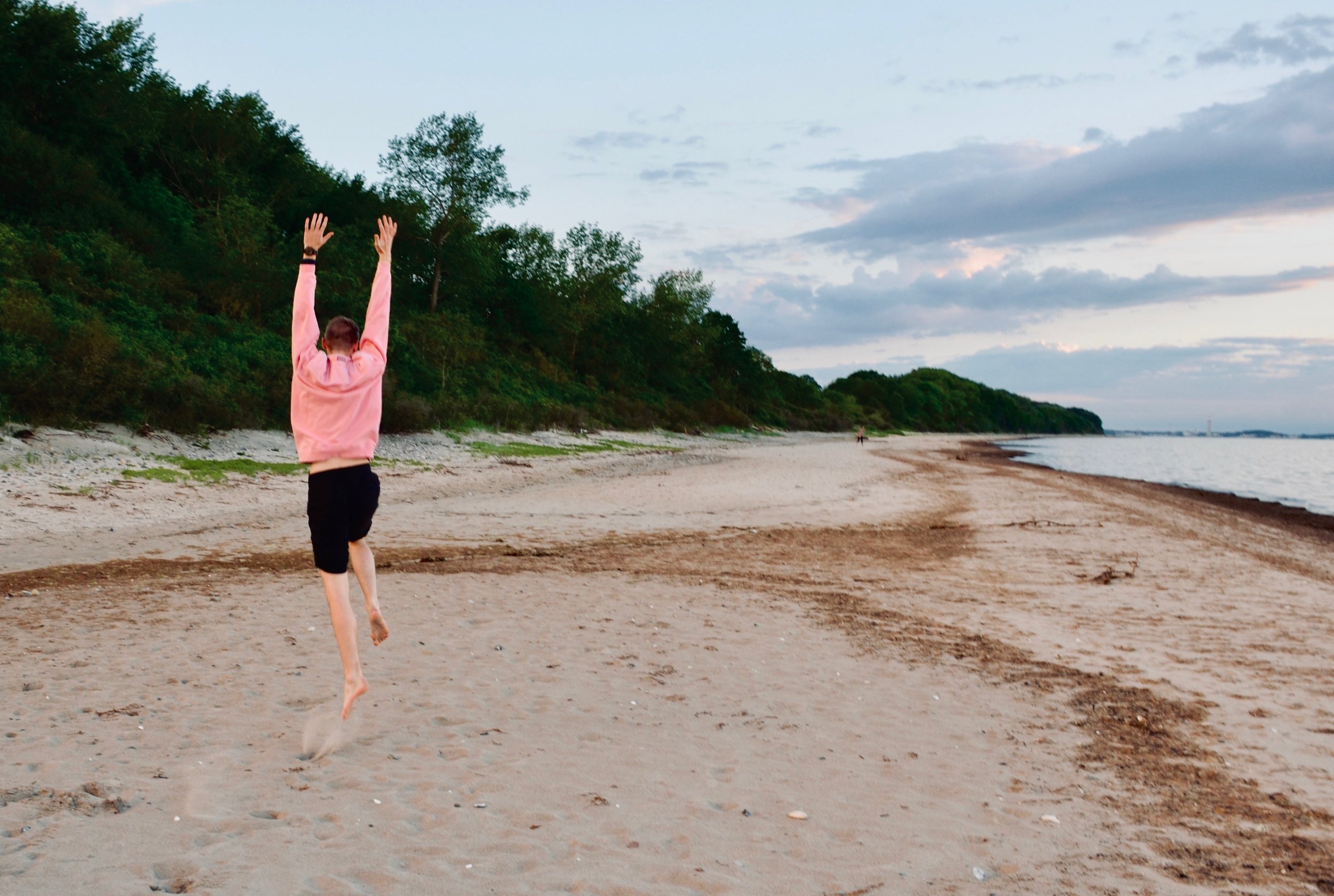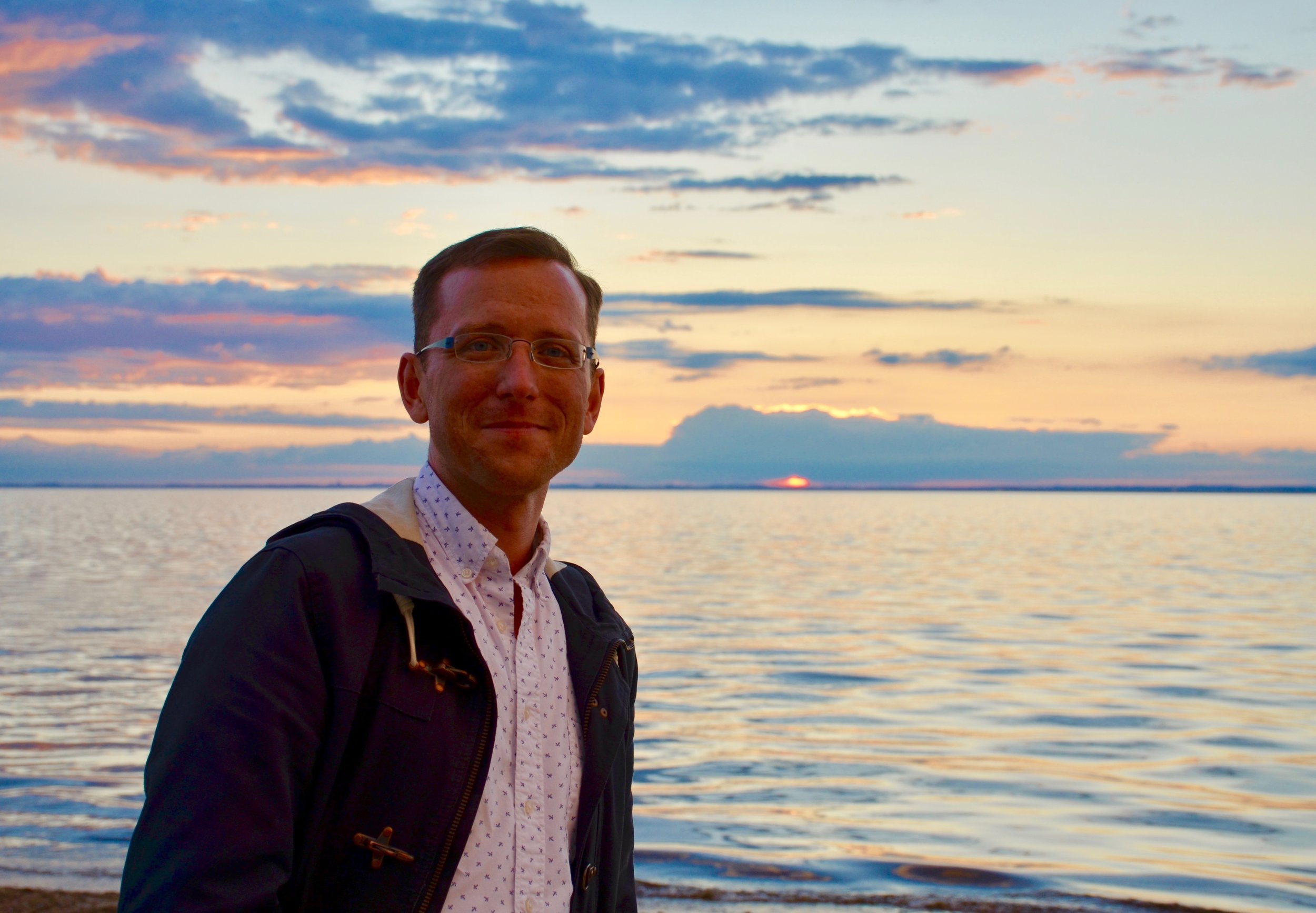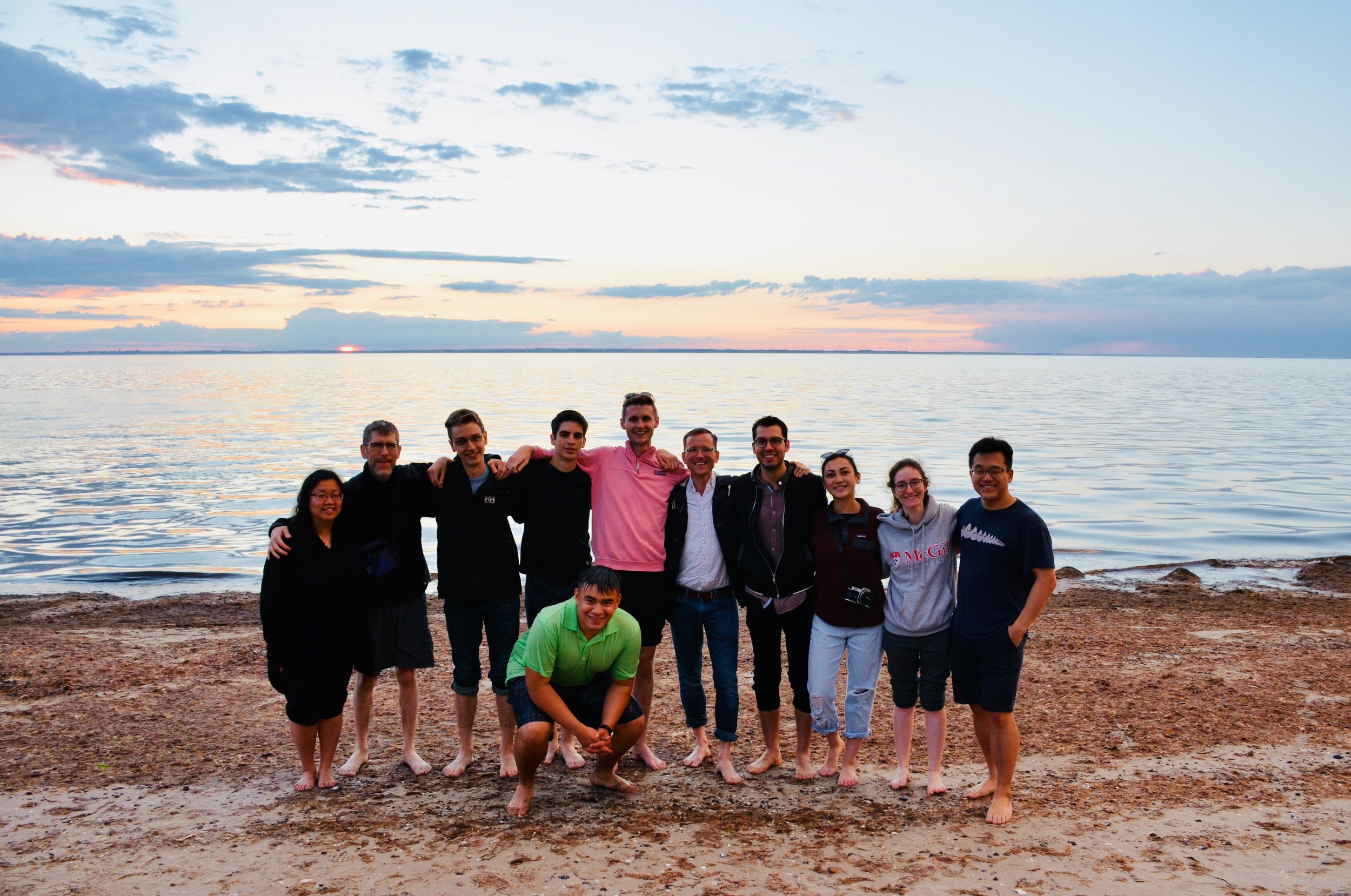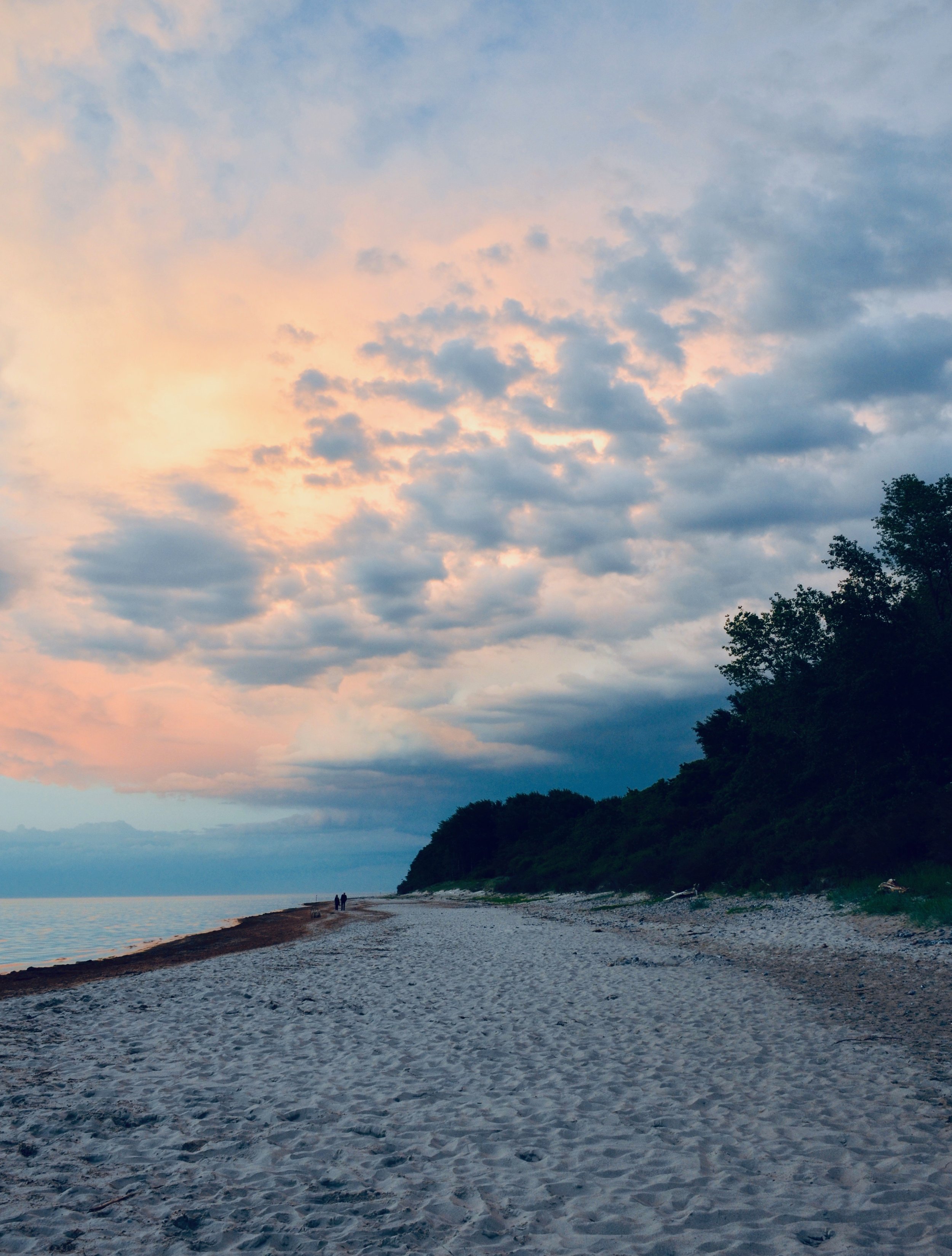A Lovely Lübeck Day
by Rosemarie Tougas
Prof. Arvid Gast introduces the organs in St. Jakobi, Lübeck.
Following a fairly short night, we travelled to Lübeck and met Prof. Arvid Gast in front of the Jakobikirche; a stunningly beautiful church, it contains three organs (one of which is a small positive built in 1673). We first had the pleasure of hearing and playing the North organ, which is the smaller of the two larger instruments. The North organ, known for being Hugo Distler’s instrument is, according to Prof. Gast, similar to the Totentanz organ Dietrich Buxtehude (1637–1707) would have played in the neighbouring Marienkirche.
1637 Stellwagen Organ, St. Jakobi, Lübeck.
Adrian Cho plays the 1637 Stellwagen Organ, St. Jakobi, Lübeck.
The North organ in Jakobi was built by Stellwagen in 1636/37 from an existing Blockwerk from 1467/1515. The principal chorus from the Hauptwerk is comprised completely of Gothic pipework. Due of the lack of space, the very soft “pedal division” initially borrowed stops from the Hauptwerk. The pedal was thus enlarged in 1935 and is now quite powerful. Inside the case, some pipes are turned upside down, which can be explained by the close quarters. This instrument has some very interesting sounds such as a Quintadena 4’, which is very clear, and an intriguing Zimbel which, when put together with the Schalmei and the Regal, creates a great colour in the Brustwerk division. It makes for a fantastic opportunity to play with an echo. The action is very pleasant and light but still easy to control. After a lot of music by Scheidt, Buxtehude, and Mendelssohn (proving that some Romantic music works very well on such an organ), it was particularly touching to hear works of Hugo Distler with the exact registration he would have used (and are marked in the score). The colours he asks for in his pieces are pretty unique, and it is without a doubt that anyone wanting to have a better grasp of Distler’s music should visit the Jakobikirche and hear, if not play!, the Stellwagen organ.
The West Organ, St. Jakobi, Lübeck.
Evan Currie plays Dupré on the West Organ, St. Jakobi, Lübeck.
The second instrument we played, the West organ, is significantly larger. It is an impressive assemblage of many periods. Some stops, such as the Principal 16’, are original from 1466/1504, and at the same time, the console is modern and even has a sequencer. Over the years, it underwent several enlargements and modifications. The organ we played today has a modern console, a sequencer, and is fit for repertoire of all eras. We were treated to Hindemith, Reubke, and Liszt, as well as Bach, Duruflé, Alain, and others. I was struck by the variety of colours of each single stop, and by the wide, expressive dynamic range of the instrument as a whole. Prof. Gast was incredibly helpful with explaining the stops and features of both organs. Most importantly, he was very generous with his time and expertise.
Evan Currie and Meg Cutting enjoy lunch in Lübeck.
After a short lunchtime in the old city, we walked to the Marienkirche. This church was surprising to many of us: it was much larger than expected and had a very high vault. While walking around Buxtehude’s grave, Alex Ross tested the acoustic with a feigned cough and proved that it was amazing. Beautiful, yet very sad pictures of the destroyed church made us realize how lucky we are to be able to visit all these churches that were ruined during the Second World War once again.
Members of Boston Organ Studio in Marienkirche, Lübeck, home church of Dietrich Buxtehude.
The 1777 Italian Baroque Organ, Lübeck Cathedral.
We hurried to the Domkirke (Lübeck Cathedral) to hear a wonderful concert given by a student of Arvid Gast on a Marcussen organ. He was playing the Prélude, Adagio et Choral varié by Duruflé, where the chant was sung by some students of the Hochschüle. Following this short concert, we had the chance to play on a completely different organ hidden at the front of the cathedral. It bears the inscription “Rosa di Cardico - 1555” and is a wonderful little Italian instrument; it is of unknown origin (but most likely dates to 1777 in its current form). Unlike the other instruments we have been playing until now, it sounds a half-tone lower than modern pitch. The most striking visible aspect of this instrument is the pedals: arranged in a short octave that can only be played by one foot. The beautiful case and the delicate sound, especially coming from such a small case in the acoustic of a big cathedral, made this little instrument very fun to play. Once again, we were able to experiment with this organ thanks to Prof. Gast.
Members of Boston Organ Studio with Prof. Arvid Gast in Lübeck Dom.
When we came home, we had the pleasure of grilling some sausages to accompany some leftover mac n’ cheese and salad along with yet another pie by Meg. We then walked to the beach and had some fun taking pictures and dipping our feet in the sea (which was surprisingly warmer than I expected). It was very nice to have a relaxing evening on the beach with the weather we had today. Hopefully we will be able to enjoy this again tomorrow!
Along the Baltic Sea at sunset.
